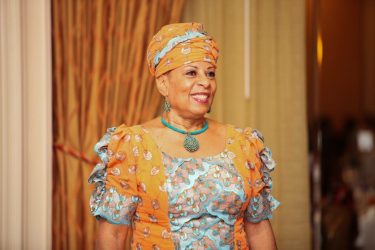
Akua Duku Anokye is an Associate Professor of Africana Language, Literature, and Culture, and Director of New College International Initiatives, Office of Interdisciplinary Global Learning and Engagement (IGLE). Dr. Anokye is the past chair of the Conference on College Composition and Communication (CCCC), and currently Chief Reader for the College Board’s Advanced Placement English Language and Composition. Dr. Anokye received the 2021 Outstanding Speaker Awards from AZ Humanities. Her research focuses on African Diaspora orality and literacy practices, folklore, storytelling, and oral history, and most recently, on African Diasporic women activists as community mothers.
Contact Info: aanokye@asu.edu
The Story Hour
Stories shape and transform our lives. This presentation explores the many stories we tell from folktales to memories of the past. It reflects on who tells stories and who we tell the stories to. Whether grandparents sharing their lives with children, or professors wowing their students with explorations and discoveries they have made–stories are at the center. What are the key points to share? How do we capture our audience? What details should we include?
Dr. Anokye begins with a Ghanaian folktale, then an African American tale from the early part of the 20th century, followed by a modern-day story. She shows the interrelatedness between these stories, and ultimately the power of stories to connect people. Dr. Anokye will invite participants to experience sharing a story of their own.
- Presentation Category – Culture, Gender, and Identity Studies – African American
| Storytelling & Folklore
By the Time They Came –African American Men of Arizona
In this presentation, Dr. Anokye, explores the untold stories and accomplishments of African American men in Arizona. Dr. Anokye focuses on identifying the common threads of the African American community that have enriched and given meaning to their lives–striving for education/schooling, work lives, belonging, turning points, and legacies, established by such prominent folks as Dr. Eugene Grigsby, artist and ASU professor, George Greathouse, ASU football star and local barber, Judge Cecil B. Patterson, and Pastor Warren Stewart.
- Presentation Category – Arizona/ Southwest History | Culture, Gender, and Identity Studies – African American Studies
 Nanibaa Beck is a 2nd generation Diné (Navajo) jeweler. Since 2013, her work reflects Native creative expressions and the growth of an Diné ‘Asdzaa (Navajo woman) as a designer and maker. Being intricately connected to the creative process at an early age motivated Beck to become more knowledgeable about the multifaceted areas surrounding Native American Art. Her anthropology background includes work and fellowships with renown museums, including the Heard Museum, the National Museum of the American Indian, the Peabody Essex Museum and the Field Museum.
Nanibaa Beck is a 2nd generation Diné (Navajo) jeweler. Since 2013, her work reflects Native creative expressions and the growth of an Diné ‘Asdzaa (Navajo woman) as a designer and maker. Being intricately connected to the creative process at an early age motivated Beck to become more knowledgeable about the multifaceted areas surrounding Native American Art. Her anthropology background includes work and fellowships with renown museums, including the Heard Museum, the National Museum of the American Indian, the Peabody Essex Museum and the Field Museum.
Contact Info: notabove.jewelry@gmail.com
Beyond the Kitsch: The Pervasive Spirit of our Indigenous Creative Community
Throughout the Southwest, tourists and locals encounter a range of Indigenous art, from manufactured and imported cultural appropriations to fine art in galleries and museums. The state’s creative Indigenous communities are sometimes lost in what is popularly featured as Native American Art. In this presentation, Diné jeweler Nanibaa Beck will highlight contemporary Native American Art, focusing on eclectic indigenous creatives throughout Arizona and beyond. Beck draws examples from her friends, family, and extended kin to demonstrate the diversity of artistic talents, mediums, and philosophical approaches of Indigenous artists. The presentation will leave participants with a better appreciation for the range of Native American creativity the state has to offer.
- Presentation Category – Art/Art History | Culture, Gender & Identity Studies – Native American Studies
David Boyles (pronouns: he/they) teaches writing and rhetoric at Arizona State University, where they also developed the Discovery Seminar course, “LGBTQ+ Youth in Pop Culture and Politics.” They are a co-founder of Drag Story Hour Arizona and current board president of the Drag Story Hour national network. They were honored for their contributions to the Phoenix LGBTQ+ community with the 2022 Phoenix Pride John Bircumshaw Community Spirit Award and have given presentations and hosted events on LGBTQ+ history around the valley. They are also the author of a Young Adult novel, Life is a Banquet.
Contact Info: david.boyles06@gmail.com
The Art of Drag
The Art of Drag — a performance of exaggerated gender expression intended to highlight the performative aspect of gender – has been a part of American history and culture for at least 150 years. Drag has never been more popular or controversial than it is today, but it is also nothing new. It has reflected, challenged, and changed cultural ideas around gender, sexuality, race, and identity for just as long. From William Dorsey Swann, who was born into slavery and went onto become America’s first known drag queen, to Jose Sarria, the San Francisco drag queen who became the first openly LGBTQ+ person to ever run for public office, this presentation will teach you about the history of drag, its trailblazers, and how this unique art form changed history.
- Presentation Category – Arts/Art History | Culture, Gender, and Identity Studies – LGBTQIA+ Studies | U.S. & World History
Sunday’s Childe: BJ Bud and the Preservation of Arizona LGBTQ+ History
In 1977, local lesbian activist BJ Bud created Sunday’s Childe, the first newsletter dedicated to Phoenix’s LGBTQ+ community. For the next two decades, Sunday’s Childe was an invaluable news source for queer people in the Valley and across Arizona, keeping readers informed on news and politics affecting the community. At the same time, BJ Bud was frequently making news herself, organizing the first Phoenix Pride march in 1981, leading the effort to impeach Governor Evan Meachem in 1987, and much more. Today, the back issues of Sunday’s Childe and other local LGBTQ+ newsletters provide an invaluable historical record of the development of the Phoenix queer community from the 1970s through the 1990s. This presentation will tell the story of BJ Bud and the growth of the Phoenix LGBTQ+ community using newsletters from the BJ Bud Memorial Archives.
- Presentation Category – Arizona/Southwest History | Culture, Gender, and Identity Studies – LGBTQIA+ Studies | Film & Media
 Carrie Calisay Cannon is a member of the Kiowa Tribe of
Carrie Calisay Cannon is a member of the Kiowa Tribe of
Oklahoma, and of Oglala Lakota and German ancestry. She has a B.S. in Wildlife Biology and M.S. in Resource Management. By weekday she fills her days as a full-time Ethnobotanist with the Hualapai Indian Tribe of the Grand Canyon of Arizona. By weekend she is a lapidary and silversmith artist who enjoys chasing the beautiful as she creates Native southwestern turquoise jewelry. If you wish to connect with Carrie, you will need a fast horse.
Contact Info: calisay17@hotmail.com
He Stands in the Sun: The Life, Legacy, & Art of Kiowa Artist T.C. Cannon
T.C. Cannon is considered one of the most talented Native American artists of the 20th century whose paintings continue to influence new generations of Native artists. As a natural born innovator and visionary Kiowa and Caddo tribal artist T.C. Cannon was a tour de force. His talents as a poet, musician, and artist ended abruptly in 1978 at the age of 31 after a fateful car crash. Cannon utilized striking color combinations, bold juxtapositions, and artfully portrayed motifs, irony, and humor deeply rooted in his cultural heritage. “He Who Stands in the Sun” or Pai-doung-u-day is T.C. Cannon’s Kiowa Indian name. This presentation will explore T.C. Cannon’s life and heritage, and the depth of his art, skill, and paramount accomplishments as a
multitalented artist.
- Presentation Category – Art/Art History | Culture, Gender, and Identity Studies – Native American Studies
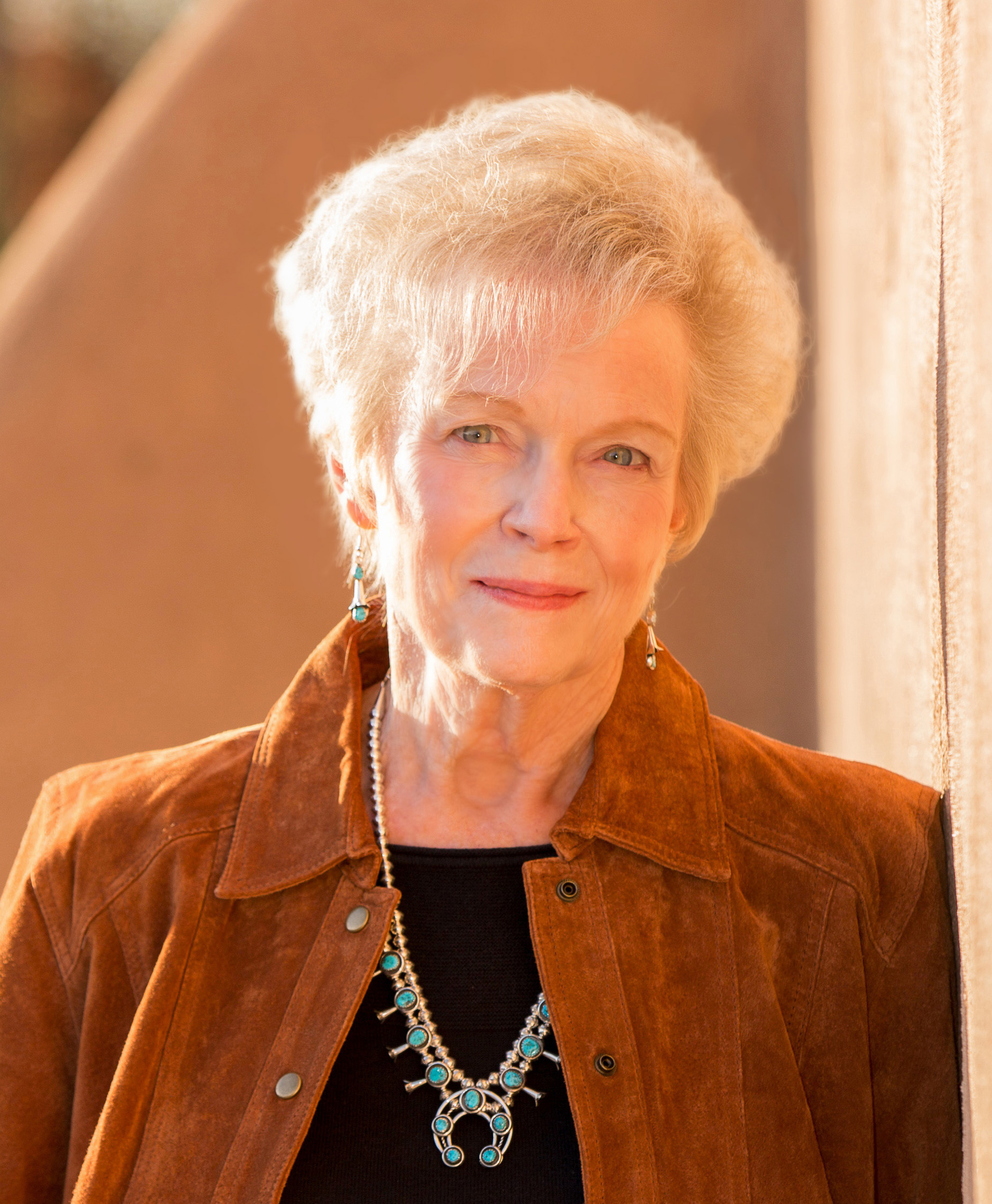 Award-winning author, historian, and lecturer Jan Cleere writes extensively about the desert southwest, particularly the people who first settled the territory. Magna cum laude graduate of ASU West with a degree is American Studies, Cleere is the author of six historical nonfiction books about the people who first ventured west. She lectures around the state about early pioneers who were instrumental in colonizing and civilizing Arizona Territory. For over nine years, Jan has written a monthly column for Tucson’s Arizona Daily Star newspaper — “Western Women” detailing the lives of Arizona’s early amazing women.
Award-winning author, historian, and lecturer Jan Cleere writes extensively about the desert southwest, particularly the people who first settled the territory. Magna cum laude graduate of ASU West with a degree is American Studies, Cleere is the author of six historical nonfiction books about the people who first ventured west. She lectures around the state about early pioneers who were instrumental in colonizing and civilizing Arizona Territory. For over nine years, Jan has written a monthly column for Tucson’s Arizona Daily Star newspaper — “Western Women” detailing the lives of Arizona’s early amazing women.
Contact Info: Jan@JanCleere.com
Maria Urquides: Mother of Bilingual Education
Maria Urquides’ Hispanic background made her the ideal teacher for Arizona’s bilingual schools, although she readily admitted she might go to hell for being ordered to punish students for speaking Spanish in the classroom. She stepped on more than a few administrative toes to attain her goal of promoting bilingual/bicultural education to children of all backgrounds. Urquides was a driving force in encouraging passage of the 1968 Bilingual Education Act which provides federal funds for students with limited English-speaking abilities. While the Act encouraged instruction in English, it also promoted multicultural awareness. Five U.S. Presidents appointed Urquides to national panels and conferences for children and education. She was a woman who made a definitive difference in the education of children of all races and ethnicities and is credited with being the single most effective force behind the implementation of bilingual education across the country.
- Presentation Category – Arizona/Southwest History, Culture, Gender & Identity Studies – Women’s Studies
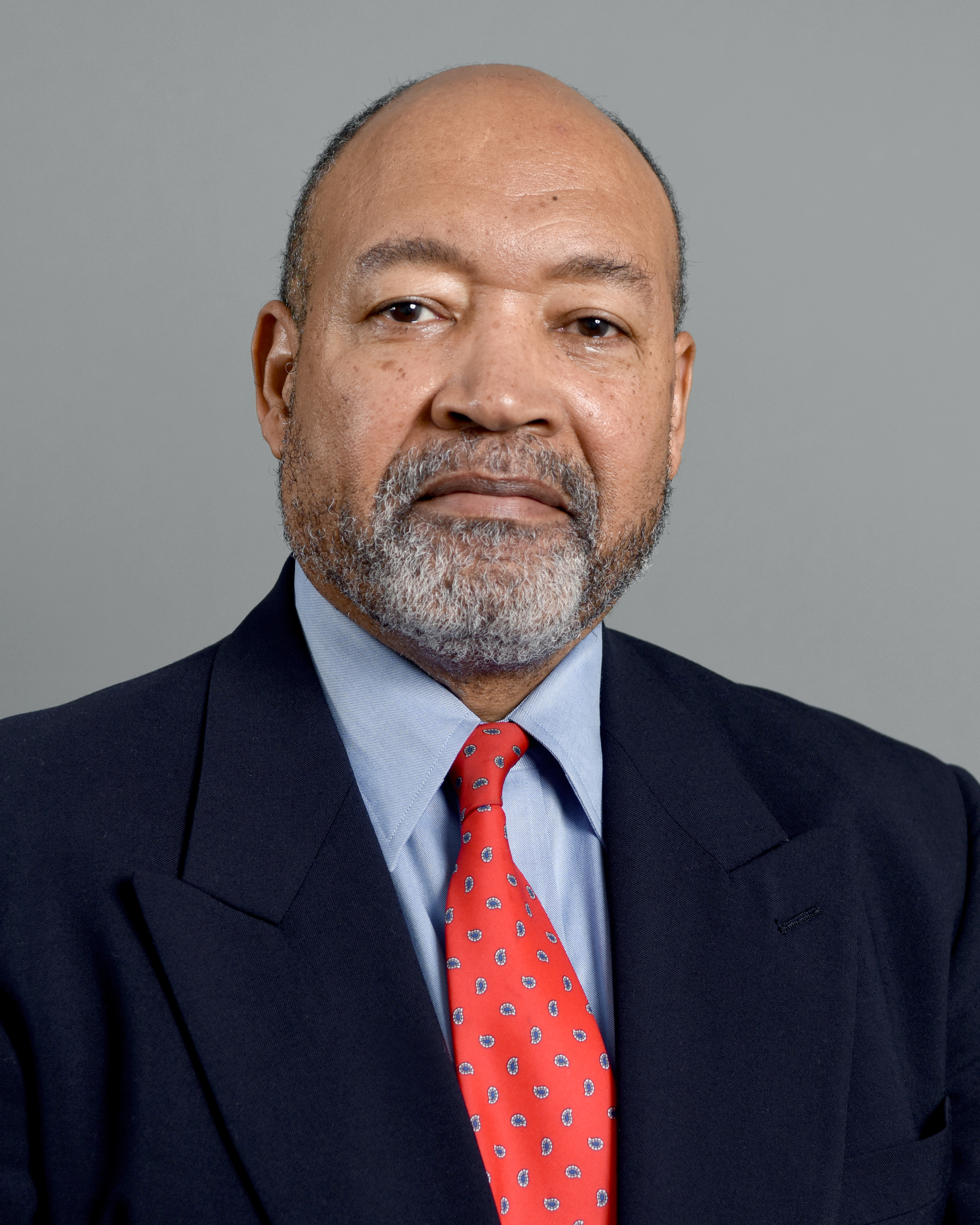 Thomas J. Davis is an historian, lawyer, and professor emeritus at Arizona State University, Tempe, where he taught U.S. constitutional and legal history. Dr. Davis also taught as a visiting professor of law at the ASU College of Law. He received his PhD in U.S. history from Columbia University in the City of New York and his JD cum laude from the University at Buffalo School of Law in New York. He has been an AZ Humanities Public Scholar Nominee and served as Arizona’s State Scholar for the 2020-21 Voices and Votes: Democracy in America, Museum on Main St. (MoMS), Smithsonian Institution, traveling exhibition. AZ Humanities bestowed on Dr. Davis the 2021 Founder’s Community Partner Award, recognizing his work “to further public humanities through sustained collaboration and exemplary community outreach.”
Thomas J. Davis is an historian, lawyer, and professor emeritus at Arizona State University, Tempe, where he taught U.S. constitutional and legal history. Dr. Davis also taught as a visiting professor of law at the ASU College of Law. He received his PhD in U.S. history from Columbia University in the City of New York and his JD cum laude from the University at Buffalo School of Law in New York. He has been an AZ Humanities Public Scholar Nominee and served as Arizona’s State Scholar for the 2020-21 Voices and Votes: Democracy in America, Museum on Main St. (MoMS), Smithsonian Institution, traveling exhibition. AZ Humanities bestowed on Dr. Davis the 2021 Founder’s Community Partner Award, recognizing his work “to further public humanities through sustained collaboration and exemplary community outreach.”
Contact Info: tjdavis@asu.edu
Arizona and Immigration: Perspectives and Policy Considerations
Arizona’s position on the US southern border has placed it at ground zero in an ongoing immigration crisis that continues to incite often ugly arguments. The arguments are not new in character or content. The size and persistence of the surge at the border is new, however. The US Border Patrol reported more than two million encounters along the US/Mexico border in fiscal 2023. The surge and the humanitarian crisis it has created, along with an estimated 11 million unauthorized immigrants in the United States, demand popular attention. This presentation briefly reviews the immigration crisis and its impact and invites reflection on how we, the people, in Arizona might best think about border and immigration policy.
- Presentation Category – Arizona/Southwest History | Borderland & Immigration | Humanities in Contemporary Issues | Jurisprudence/Justice Studies | U.S. History
One Supreme Court: What and How Does the US Supreme Court Do What it Does
The Supreme Court United States (SCOTUS) in recent years has been in the news more than ever. Controversy and distrust accompany many of its major decisions to a degree that is driving a crisis in public confidence. SCOTUS “is suffering from a historic lack of trust and confidence,” Reporter Domenico Montanaro noted in a May 3, 2023, National Public Radio (NPR) news story. Yet beyond the headline takeaways, few in the public understand exactly what the Court does or how it operates. Reviewing the Court’s Constitutional mandate, how cases reach the Court for decision, and how the Court disposes of cases in its decisions contributes to understanding the Court and its power and role in the US federal structure.
- Presentation Category – Humanities in Contemporary Issues | Jurisprudence/Justice Studies | U.S. History
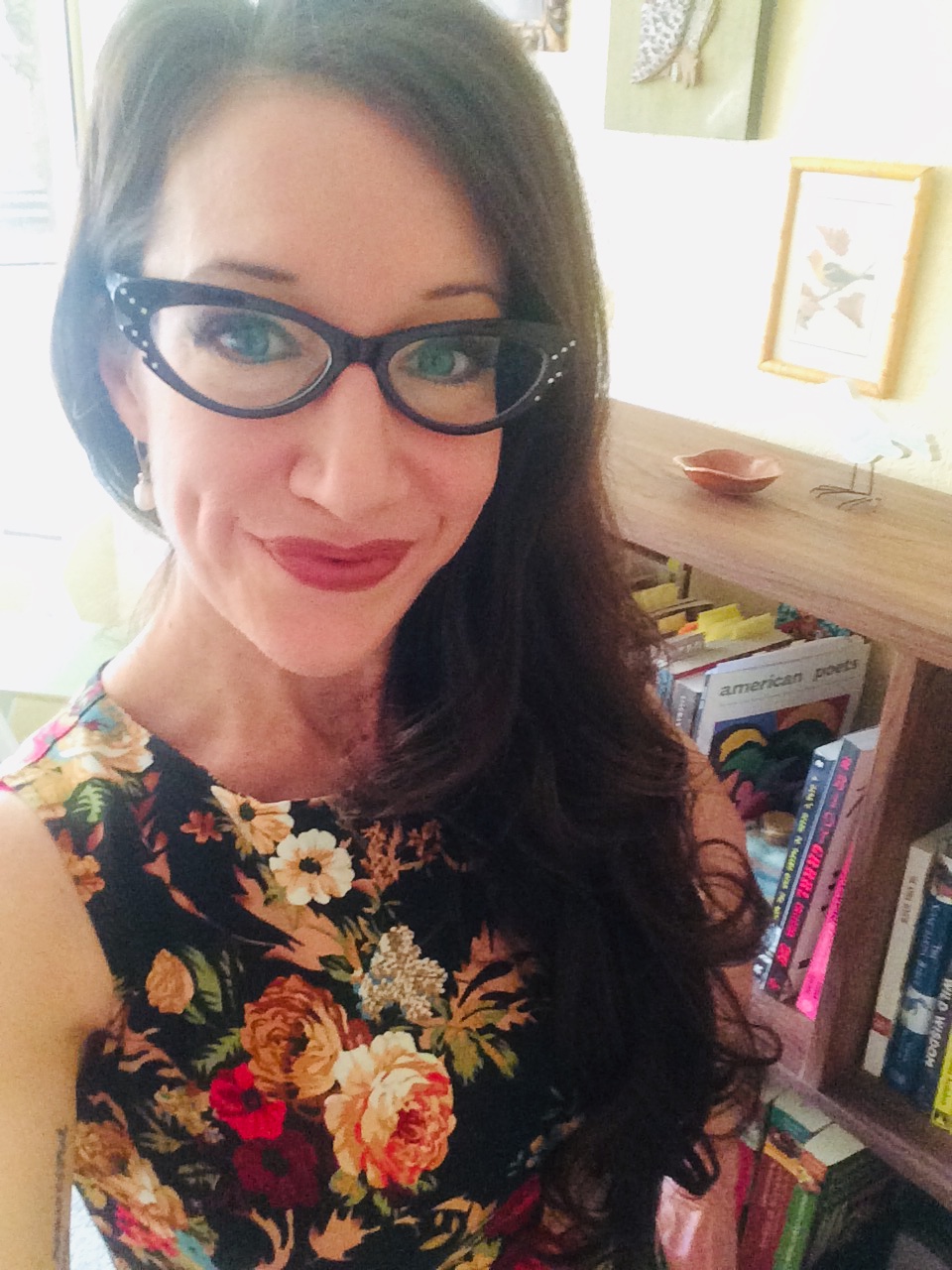 Rosemarie Dombrowski (RD) is the inaugural Poet Laureate of Phoenix, AZ, the founding editor of rinky dink press, and the founding director of Revisionary Arts, a nonprofit that facilitates self-care and healing through poetry. Dr. Dombrowski has published three collections of poetry and is the recipient of a fellowship from the Academy of American Poets, an Arts Hero award, and the Arizona Humanities Outstanding Speaker Award. In 2022, she gave a TEDx talk entitled “The Medicinal Power of Poetry.” Dr. Dombrowski is a teaching professor at Arizona State University and a professor of practice at the University of Arizona College of Medicine-Phoenix.
Rosemarie Dombrowski (RD) is the inaugural Poet Laureate of Phoenix, AZ, the founding editor of rinky dink press, and the founding director of Revisionary Arts, a nonprofit that facilitates self-care and healing through poetry. Dr. Dombrowski has published three collections of poetry and is the recipient of a fellowship from the Academy of American Poets, an Arts Hero award, and the Arizona Humanities Outstanding Speaker Award. In 2022, she gave a TEDx talk entitled “The Medicinal Power of Poetry.” Dr. Dombrowski is a teaching professor at Arizona State University and a professor of practice at the University of Arizona College of Medicine-Phoenix.
Contact Info: poetryphd@outlook.com
Disruption, Subversion, & Agency: A Brief History of Zines (virtual only/limited in-person)
This presentation explores the origins of zine culture – self-published, hand-bound, small- circulation publications that gave voice to historically marginalized populations – beginning with the fascicles of Emily Dickinson and the Little Magazines of the early 20th century, continuing through the Mimeo Poets of the mid-century to the punk phenomenon of the Riot Grrrls in the 90s. The presentation includes a DIY zine-making tutorial during which attendees will learn how to create their own micro-zines.
- Presentation Category – Art/Art History | Film & Media | Literature
Writing for Wellness: A Poetic Medicine Approach (virtual only/limited in-person)
In this talk, we’ll review the history of poetic medicine and discuss some of the studies that support the efficacy of writing (and reading) poetry as a means to increasing our capacity for self-reflection, resiliency, and healing. We’ll also experience the benefits of this approach by engaging in reading and writing exercises designed to help us recast our narratives (medical and otherwise), and combat the impacts of stress, illness, grief, and ageing.
- Presentation Category – Medical Humanities | Poetry
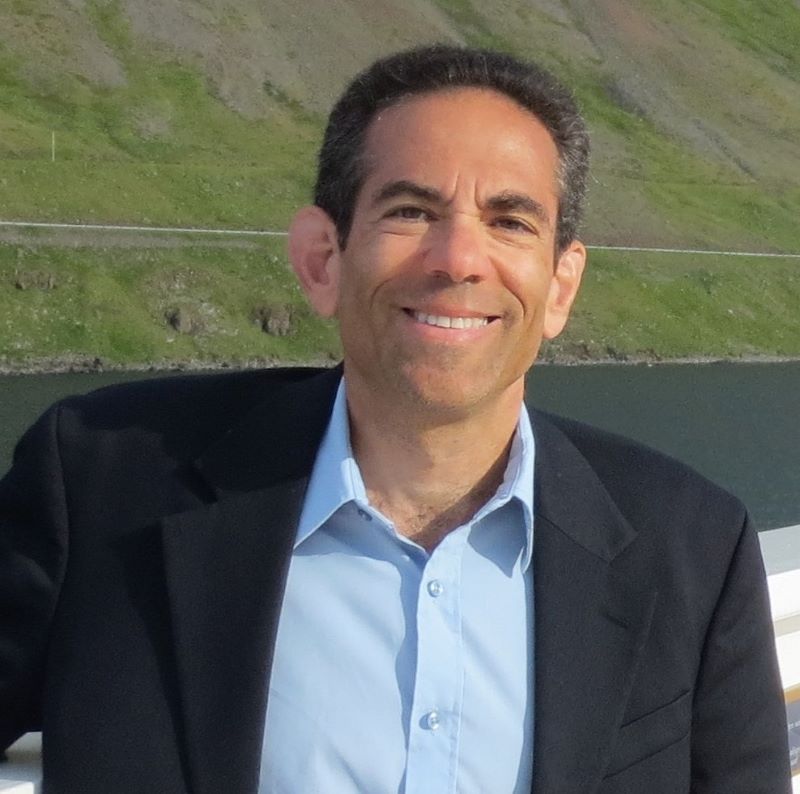 Dan Fellner is an eight-time Fulbright fellow, university instructor and freelance travel writer/photographer. He has published over 150 travel articles in various magazines and newspapers around the world. His work has been featured in such publications as USA Today, The Jerusalem Post, The Washington Post and The Arizona Republic. In 1998 Fellner joined Arizona State University as a faculty associate and has taught courses in print and broadcast journalism, public relations, international mass media, intercultural communications, and travel writing. He is a faculty affiliate with ASU’s Melikian Center for Russian, Eurasian and East European Studies, and currently teaches courses in travel writing, Eastern Europe, Asia, unique Jewish communities, and river cruising for ASU’s Osher Lifelong Learning Institute (OLLI). Fellner has received Fulbright Scholar grants to Latvia, Moldova, and Bulgaria; and Fulbright Specialist grants to Lithuania, Latvia, Indonesia, and North Macedonia (twice). Most recently, he was a Fulbright Specialist at Southeast European University in North Macedonia during the 2021 fall semester.
Dan Fellner is an eight-time Fulbright fellow, university instructor and freelance travel writer/photographer. He has published over 150 travel articles in various magazines and newspapers around the world. His work has been featured in such publications as USA Today, The Jerusalem Post, The Washington Post and The Arizona Republic. In 1998 Fellner joined Arizona State University as a faculty associate and has taught courses in print and broadcast journalism, public relations, international mass media, intercultural communications, and travel writing. He is a faculty affiliate with ASU’s Melikian Center for Russian, Eurasian and East European Studies, and currently teaches courses in travel writing, Eastern Europe, Asia, unique Jewish communities, and river cruising for ASU’s Osher Lifelong Learning Institute (OLLI). Fellner has received Fulbright Scholar grants to Latvia, Moldova, and Bulgaria; and Fulbright Specialist grants to Lithuania, Latvia, Indonesia, and North Macedonia (twice). Most recently, he was a Fulbright Specialist at Southeast European University in North Macedonia during the 2021 fall semester.
Contact Info: dan.fellner@asu.edu
The Jews of Sosua: An Inspirational Story of Holocaust Survival
It is one of the most uplifting – yet often forgotten – stories of Jewish survival during the Holocaust. In the early 1940s, the Dominican Republic was the only sovereign country to accept large numbers of Jewish refugees. About 750 German and Austrian Jews found a safe haven on an abandoned banana plantation in a town called Sosua on the Dominican Republic’s northern coast. Why did the Dominican Republic accept Jewish refugees when so many other countries turned their backs? As a travel journalist, Dan Fellner visited Sosua and interviewed original settlers. He observed firsthand the fascinating remnants of Jewish life in this unconventional colony that’s become known as “Tropical Zion.”
- Presentation Category – World History
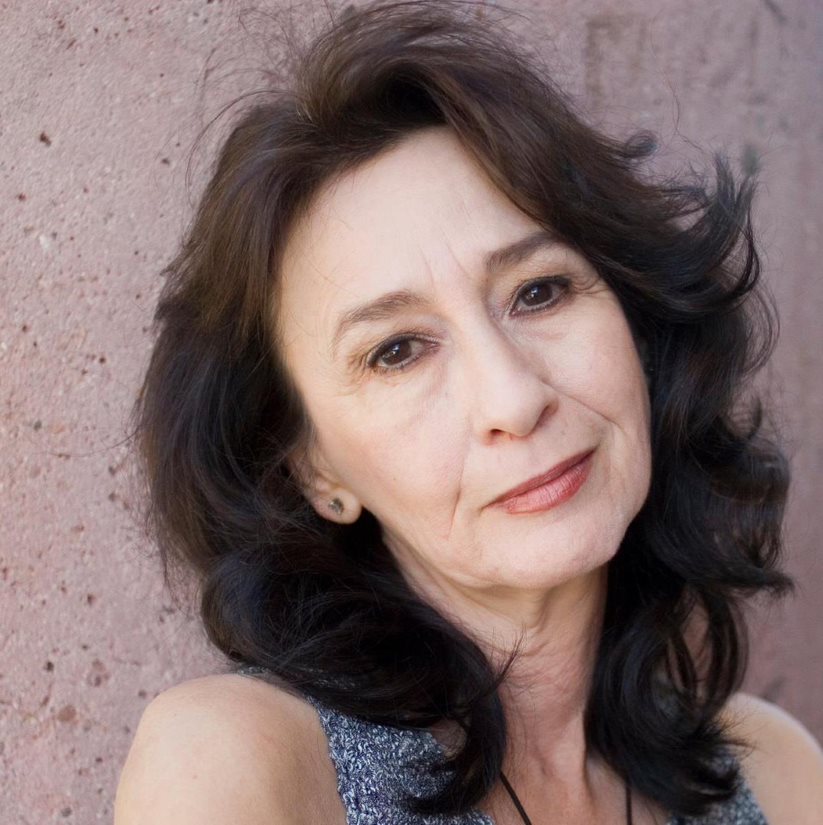 Angela Girón was the Program Director & Founding Faculty of the Master of Liberal Studies Program (MLSt) at Arizona State University. She developed numerous courses for the MLSt program with a strong focus on film content. Girón presented The Missing – Geriatric Female Sexuality in Film Content & Cinematography at the Film-Philosophy conference at St. Anne’s College, Oxford University, England and created a course on Film-Philosophy. Girón worked professionally in theatre and film out of Chicago, Los Angeles, Montreal, and Toronto. Among her many TV and film credits, is the role of Alice B. Toklas in the film, The Moderns directed by Alan Rudolph. She performed her play, Nitza – A Cuban Flavor, at the United Solo Festival in NYC. Girón is a long-time member of the Screen Actors Guild and a member of the ASU Faculty Women of Color Caucus. Her short fiction is featured in the anthology, Fearless – Women’s Journeys to Self-Empowerment. Since May of 2023, Girón is an ASU Clinical Assistant Professor Emerita.
Angela Girón was the Program Director & Founding Faculty of the Master of Liberal Studies Program (MLSt) at Arizona State University. She developed numerous courses for the MLSt program with a strong focus on film content. Girón presented The Missing – Geriatric Female Sexuality in Film Content & Cinematography at the Film-Philosophy conference at St. Anne’s College, Oxford University, England and created a course on Film-Philosophy. Girón worked professionally in theatre and film out of Chicago, Los Angeles, Montreal, and Toronto. Among her many TV and film credits, is the role of Alice B. Toklas in the film, The Moderns directed by Alan Rudolph. She performed her play, Nitza – A Cuban Flavor, at the United Solo Festival in NYC. Girón is a long-time member of the Screen Actors Guild and a member of the ASU Faculty Women of Color Caucus. Her short fiction is featured in the anthology, Fearless – Women’s Journeys to Self-Empowerment. Since May of 2023, Girón is an ASU Clinical Assistant Professor Emerita.
Contact Info: angela.giron@asu.edu
Somos Españoles: Inter-familial Racism in the American Southwest
This presentation explores the ongoing Eurocentric practice of intra-familial colorism in Hispanic families in the American Southwest and its colonial origins. How have media representations over the decades contributed to the practice of colorism? Are current immigration practices fueling a revival of colorism? How are Hispanic children affected by colorism? Through family folklore and common Spanish “dichos” (sayings), Angela Girón will examine how this practice negatively affects many families, including members of her own family. Girón will discuss what we as a community can do to eradicate colorism.
- Presentation Category – Culture, Gender, & Identity Studies – Hispanic Studies
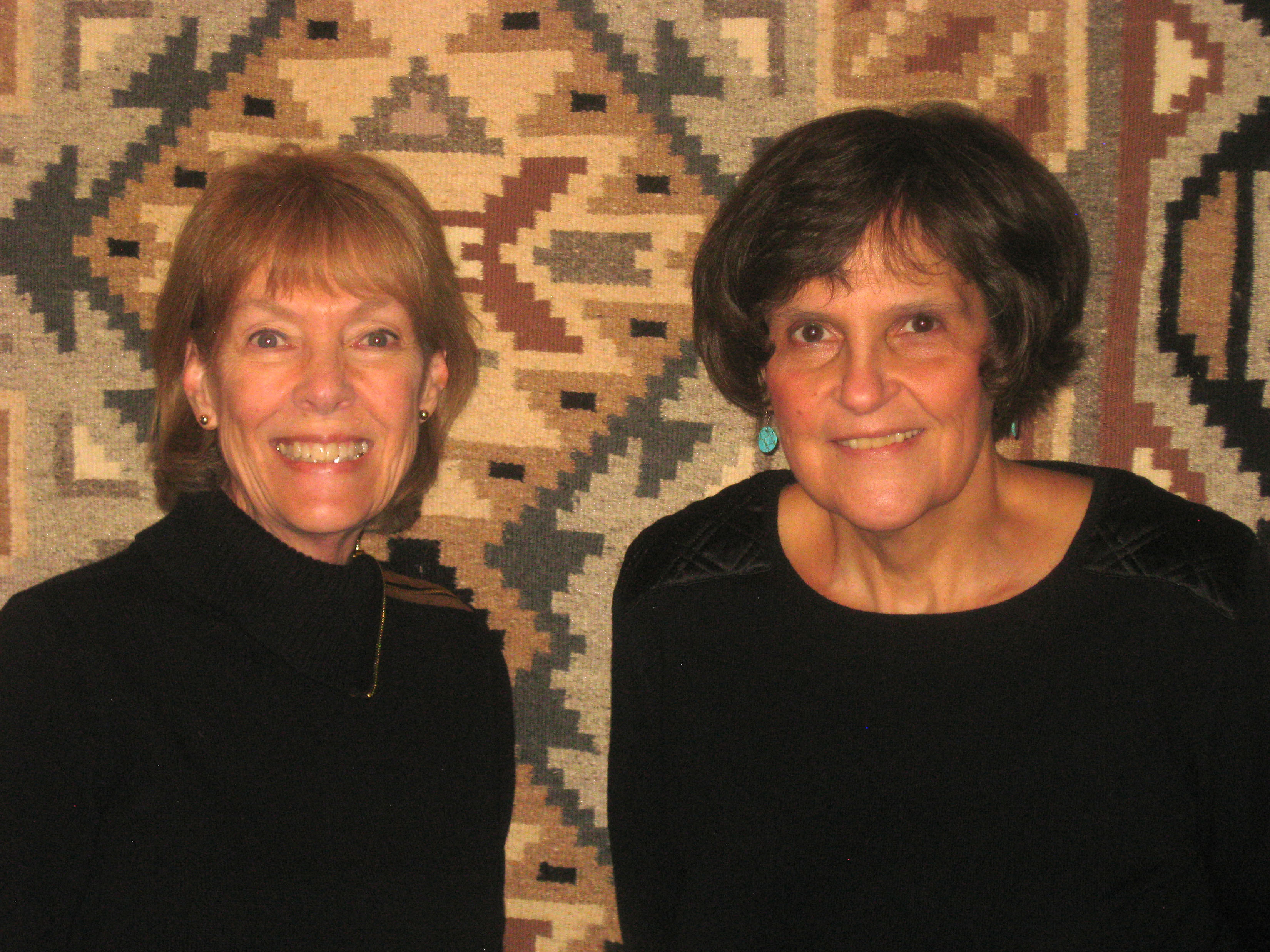 Chris and Sandy have been speaking about the land and people of the Colorado Plateau since 2012, after completing docent training at the Museum of Northern Arizona. In-depth research and related interviews have resulted in lectures to their fellow docents, local social and educational groups, and at public venues such as Riordan Mansion in Flagstaff. Some topics are presented in costumes of the time period, at some we serve food, and in every case with a thorough exploration of the events and personalities of the time from multiple points of view.
Chris and Sandy have been speaking about the land and people of the Colorado Plateau since 2012, after completing docent training at the Museum of Northern Arizona. In-depth research and related interviews have resulted in lectures to their fellow docents, local social and educational groups, and at public venues such as Riordan Mansion in Flagstaff. Some topics are presented in costumes of the time period, at some we serve food, and in every case with a thorough exploration of the events and personalities of the time from multiple points of view.
Contact Info: cglenn757@gmail.com, thesunseris@msn.com
The Vanishing Trading Posts
The stories of trading posts in the Southwest are a unique snapshot of life almost one hundred years ago. In the early 1900’s, trading posts in the Four corners flourished. There were over one hundred trading posts on the plateau, but today only five remain. Why did they vanish? The challenges and unexpected gifts of cross-cultural exchange are factors, as well as the social and economic changes on the reservation and across the country.
- Presentation Category – Arizona/Southwest History
 Matthew has a Ph.D. in Philosophy and has taught environmental ethics, media ethics, and technology and human values at Northern Arizona University, Coconino Community College, and Embry-Riddle Aeronautical University. Matthew recently participated in a National Endowment for the Humanities summer seminar on extending Aldo Leopold’s “Land Ethic.” He is co-founder of Sedona Philosophy, which offers guided hikes and retreats in Sedona and northern Arizona.
Matthew has a Ph.D. in Philosophy and has taught environmental ethics, media ethics, and technology and human values at Northern Arizona University, Coconino Community College, and Embry-Riddle Aeronautical University. Matthew recently participated in a National Endowment for the Humanities summer seminar on extending Aldo Leopold’s “Land Ethic.” He is co-founder of Sedona Philosophy, which offers guided hikes and retreats in Sedona and northern Arizona.
Contact Info: matthew@sedonaphilosophy.com
Getting Deeper into the Grand Canyon and Other Natural Wonder’s
Why are we drawn to such places as the Grand Canyon? Why are people moved to travel from all around the world to visit and explore them? In this presentation, we will discuss people’s relationship with the natural landscape with a particular focus on some of Arizona’s most iconic locations. What are the ethical implications of our encounters with these natural wonders?
What can philosophy teach us about the interaction between humanity, beauty, and sublime nature?
- Presentation Category – Environmental Humanities | Philosophy
Staying Human in the Artificial Intelligence Revolution
By most accounts, the revolution in Artificial Intelligence (AI) has only just begun. What is the current state of AI and what does it mean for humanity? This presentation will provide a general introduction to what AI currently can and cannot do. We will also explore some of the philosophical questions that AI raises. What are the ethical concerns about using AI? What about privacy concerns? What does AI mean for our jobs? Will we be threatened by a robot apocalypse? And what, ultimately, does it mean to be human in the age of AI?
- Presentation Category – Environmental Humanities | Humanities in Contemporary Issues | Philosophy
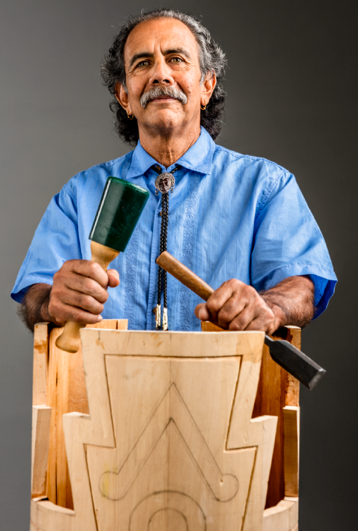 As a sculptor, muralist, storyteller and performance artist Zarco has dedicated his career to creating positive social change through the arts. Born in Arizona, he has been instrumental in the development of Latino Arts statewide. His art has been exhibited in Mexico and throughout the United States. He has received international acclaim, and awards, such as a National Endowment for the Arts Japan Fellowship, a Governor’s Arts Award, a Zony Award, became the Southwest Folklife Alliance Master Artist, and has been awarded grants for artistic projects by The Doris Duke Foundation, Valley Metro and Arizona Community Foundation. Visit www.zarkmask.com.
As a sculptor, muralist, storyteller and performance artist Zarco has dedicated his career to creating positive social change through the arts. Born in Arizona, he has been instrumental in the development of Latino Arts statewide. His art has been exhibited in Mexico and throughout the United States. He has received international acclaim, and awards, such as a National Endowment for the Arts Japan Fellowship, a Governor’s Arts Award, a Zony Award, became the Southwest Folklife Alliance Master Artist, and has been awarded grants for artistic projects by The Doris Duke Foundation, Valley Metro and Arizona Community Foundation. Visit www.zarkmask.com.
Contact Info: zarkmask@msn.com
Cantando con Tata
The life and music of an Arizona Legend! Lalo Guerrero, a Mexican American singer-songwriter from Tucson, is considered the Godfather of Chicano Music. He was a Grammy award winner and received the Presidential Medal of Honor for his contribution to Arts and Culture in the US by President Clinton. Join Zarco for a program about Lalo Guerrero and his impact on Chicano music today.
- Presentation Category – Arizona/Southwest History | Music
Dia de los Muertos Storytelling
Dia de Los Muertos is a highly celebrated and significant holiday held throughout Mexico, Latin America, and the Southwest. It is a day when homage is paid with prayers, offerings of food and the building of altars to those who have gone before us. Join Guerrero and his unique masked characters as they celebrate Día de los Muertos (Day of the Dead) with hilarious and moving storytelling, turning stereotypes on their heads. Among the characters making appearances are the poetry spouting “El Vato Poeta,” the flirtatious “La Comadre,” the wise “El Abuelito,” and other beloved characters that Guerrero, a prolific playwright, has created to express the humor and sadness of our lives. Guerrero’s storytelling puts life into perspective in a delightful and engaging way, helping us accept and even laugh at our most primal fears about death.
- Presentation Category – Culture, Gender, & Identity Studies – Hispanic Studies | Storytelling & Folklore
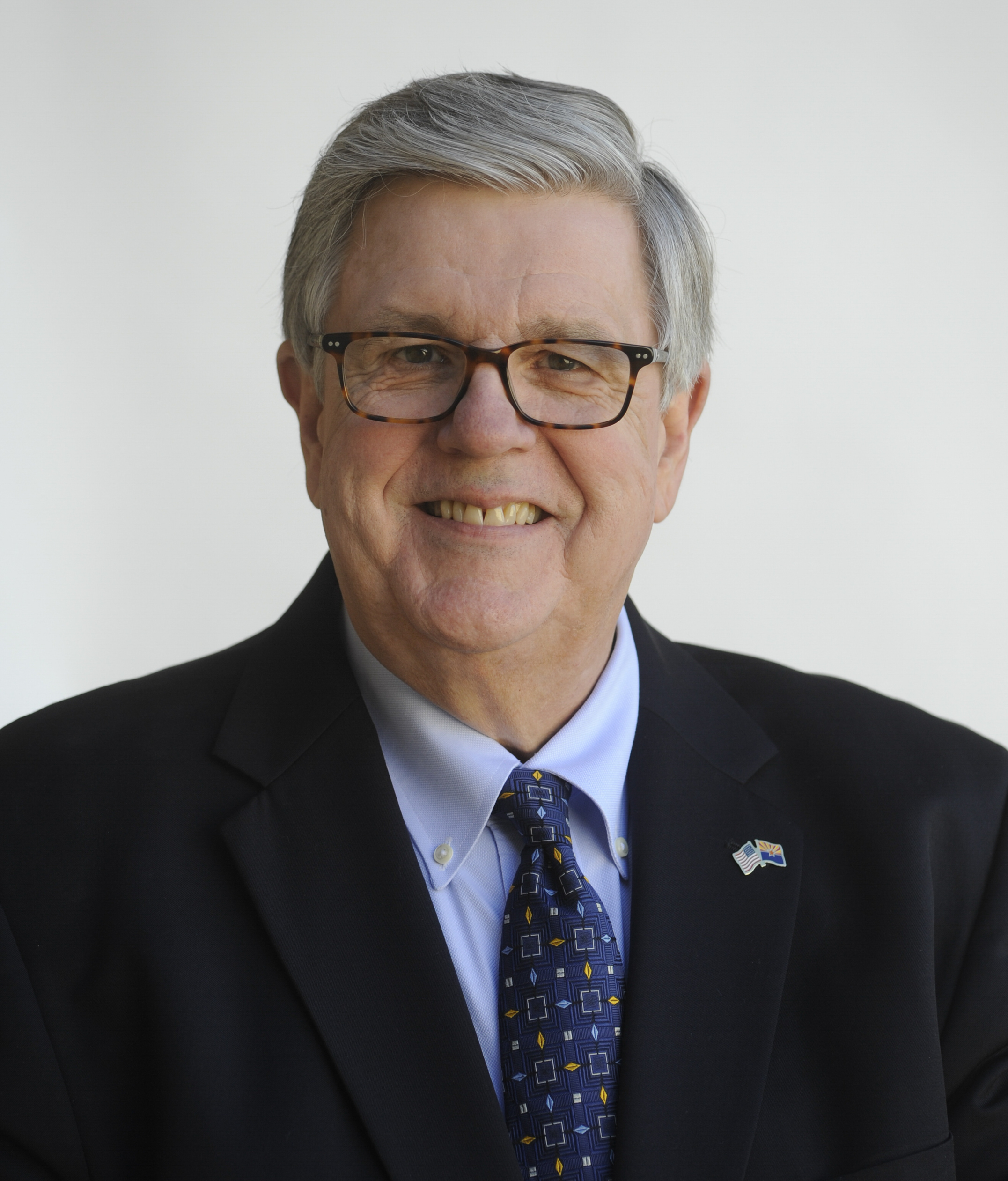 Win Holden was named the sixth Publisher of Arizona Highways Magazine in May 2000. The publication is recognized as one of the finest travel magazines in the world. The magazine has over 120,000 subscribers in all 50 states and 100 countries. As Publisher, Mr. Holden led a diverse group of businesses centered on the world-renowned magazine including licensing, book publishing, calendars, e- commerce, new product development, product marketing and retailing. A Valley resident since 1980, Mr. Holden was recognized by the Arizona Office of Tourism and the Arizona Lodging and Tourism Association as their 2017 and 2018 Lifetime Award recipient and received the 2015 Lifetime Achievement Award from the Business Journal. He was the 2007 inductee into the Arizona Tourism Hall of Fame.
Win Holden was named the sixth Publisher of Arizona Highways Magazine in May 2000. The publication is recognized as one of the finest travel magazines in the world. The magazine has over 120,000 subscribers in all 50 states and 100 countries. As Publisher, Mr. Holden led a diverse group of businesses centered on the world-renowned magazine including licensing, book publishing, calendars, e- commerce, new product development, product marketing and retailing. A Valley resident since 1980, Mr. Holden was recognized by the Arizona Office of Tourism and the Arizona Lodging and Tourism Association as their 2017 and 2018 Lifetime Award recipient and received the 2015 Lifetime Achievement Award from the Business Journal. He was the 2007 inductee into the Arizona Tourism Hall of Fame.
Contact Info: wholden1@me.com
100 Years Grand – The Story of Arizona Highways Magazine
April 2025 will mark Arizona Highways magazine’s 100th birthday. How did a brochure produced by the Arizona Highway Department become one of the most revered travel publications in the world? How has Arizona Highways remained relevant for a century while other national magazines have failed? Former Arizona Highways Publisher, Win Holden, will share the inside story of how this extraordinary publication has not only survived but thrived by attracting elite landscape photographers and using an unconventional publishing business model incorporating licensing, retailing and ancillary products. The presentation features dozens of historical and contemporary photographs telling the compelling story of a magazine that delivers over $65 million in annual economic impact to the state by captivating subscribers in all 50 states and 100 countries.
- Presentation Category – Arizona/Southwest History, Film and Media
 Björn Krondorfer is Regents’ Professor and the Director of the Martin-Springer Institute at Northern Arizona University. As Endowed Professor of Religious Studies, he also teaches in the Department of Comparative Cultural Studies. His field of expertise is religion/gender/culture and (post-) Holocaust and reconciliation studies. He received a Senior Research Fellowship at the Vrije University in Amsterdam and held visiting faculty positions in Germany and South Africa. He is currently the VP of the Association for Public Religion and Intellectual Life; in 2020 he became chair of the Consortium of Higher Education Centers for Holocaust, Genocide, and Human Rights Studies.
Björn Krondorfer is Regents’ Professor and the Director of the Martin-Springer Institute at Northern Arizona University. As Endowed Professor of Religious Studies, he also teaches in the Department of Comparative Cultural Studies. His field of expertise is religion/gender/culture and (post-) Holocaust and reconciliation studies. He received a Senior Research Fellowship at the Vrije University in Amsterdam and held visiting faculty positions in Germany and South Africa. He is currently the VP of the Association for Public Religion and Intellectual Life; in 2020 he became chair of the Consortium of Higher Education Centers for Holocaust, Genocide, and Human Rights Studies.
Contact Info: bjorn.krondorfer@nau.edu
Jewish Women’s Resilience, Resistance, and Survival in the Holocaust
This presentation traces the lives of two women Holocaust survivors who both grew up in traditional Jewish families in Bedzin, Poland and later became residents of Arizona: Jane Lipski (Tucson) and Doris Martin (Flagstaff). They managed to survive the Nazi onslaught as adolescent girls. While Jane was able to escape the ghetto and join the resistance movement in Slovakia, Doris was sent to Auschwitz and selected for labor at a women’s camp near the Gross-Rosen concentration camp. While Doris was liberated in 1945 by the advancing Soviet forces and ended up in a Displaced Person Camp in Germany, Jane was arrested by the Soviets as a suspected spy and remained in captivity in Soviet labor camps until 1947. Dr. Krondorfer will introduce the complex history of the Holocaust through the lives of women like Doris and Jane, with particular attention to their resourcefulness in the struggle so to survive.
- Presentation Category – Culture, Gender, and Identity Studies | U.S. & World History
The Rise of Antisemitism and Nazi Propaganda
In June of 2021, Holocaust education became a required subject in Arizona public middle and high schools, making space for a discussion on the rise of antisemitic propaganda in 20th century Germany. This presentation will begin with a brief look at the early stages of antisemitic messaging in the 1890s, 09’s and WWI into the 1920s. Moving along chronologically the timeline, crude political satire can be traced through legal sanction and (pseudo-) scientific justifications. The presentation also touches on the Nazi policy of “Lebensraum” (living space), in which race and space ideologies paved the way for the eventual genocidal campaign against European Jews.
- Presentation Category – Humanities in Contemporary Issues | U.S. & World History
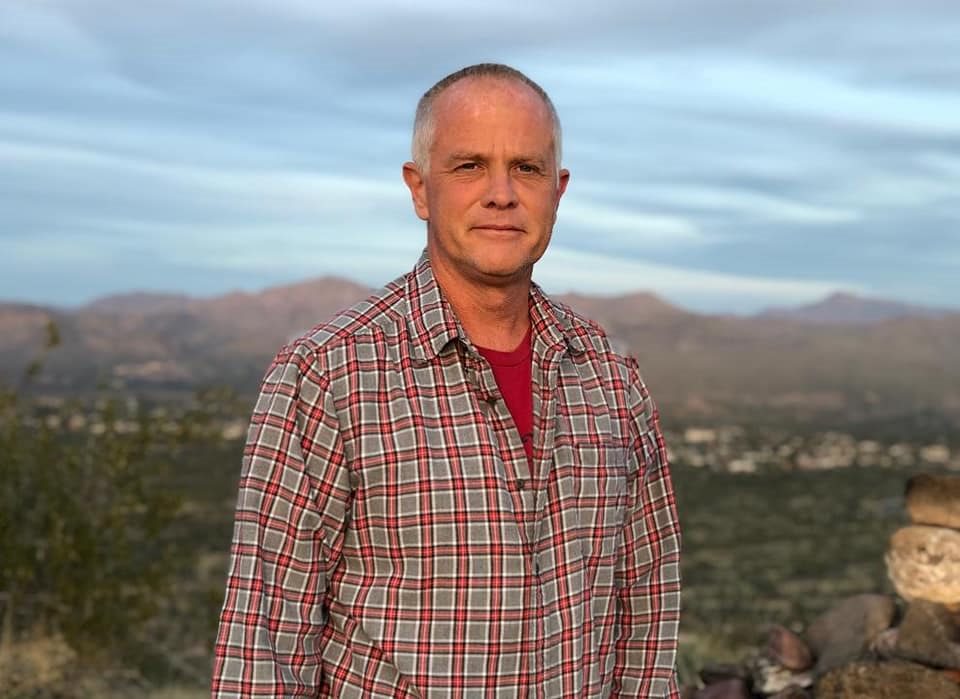 John Mack is a graduate of the University of Kansas with a master’s degree in Russian history and a Ph.D. in American history. His book on the settlement of southeast Kansas, Bucking the Railroads on the Kansas Frontier: the struggle over land claims by homesteading Civil Veterans, 1867-1876, was published by McFarland Press in 2012. Dr. Mack has published multiple peer- reviewed articles on aspects of both Russian and US history.
John Mack is a graduate of the University of Kansas with a master’s degree in Russian history and a Ph.D. in American history. His book on the settlement of southeast Kansas, Bucking the Railroads on the Kansas Frontier: the struggle over land claims by homesteading Civil Veterans, 1867-1876, was published by McFarland Press in 2012. Dr. Mack has published multiple peer- reviewed articles on aspects of both Russian and US history.
Contact Info: jmack12@gsu.edu
Debating Origins: Uncovering the Forgotten History of Horses in Arizona
Although European settlers are commonly credited with introducing horses to Arizona, Native American communities in the state have long had a deep and cultural relationship with these animals. This presentation explores the ongoing conversation about the origins of horses in Arizona, emphasizing the perspectives and insights of Indigenous Arizonans. By delving into the cultural and historical roles horses have played in Native American communities, specifically the Apache and Diné, it uncovers a more nuanced and accurate narrative of how horses arrived in the state. The presentation underscores the significance of recognizing and honoring Arizona’s Native American heritage and its impact on the state’s history.
- Presentation Category – Arizona/Southwest History | Culture, Gender, & Identity Studies: Native American Studies
The Selling of the Grand Canyon: the Santa Fe, Harvey Company and the El Tovar
This presentation discusses the significance of the American Southwest in the early 20th
century when national attention shifted to the canyons and deserts of the American Southwest. Although American scientists, artists, writers, fur traders, and explorers had been visiting the Southwest since the early 19th century, the arrival of the railroads eased access which in turn increased interest in both the natural and human history of the region. This presentation discusses the efforts of William Haskell Simpson (representing the Railroad) and the Harvey Company to coordinate, sustain, and profit from American interest in the region by building and then promoting the El Tovar at the Grand Canyon. Together the Railroad and Harvey Company played a pivotal role in creating the dominant mythology of the American Southwest.
- Presentation Category – Arizona/Southwest History
Oscar Mancinas is a Rarámuri-Chicano educator, poet, author, scholar, and organizer. He was born and raised in Mesa’s Washington-Escobedo neighborhood—where his family has resided since the 1950s. Oscar’s books, To Live and Die in El Valle and Des_____: Papeles, Palabras, & Poems from the Desert, have gained recognition from the Border Regional Library Association Southwest Book Awards, as well as the New Mexico-Arizona Book Awards and the Mesa Book Festival. He recently completed his doctorate in Transborder Studies at Arizona State University; he teaches creative writing and literary studies at Northern Arizona University.
Contact Info: helloimoscar@gmail.com
Authoring Home – Arizona’s Indigenous and Chicano Literary History
Arizona is often thought of in the context of “The West,” that is, as a frontier that needed to be tamed and populated by settlers coming from the eastern and midwestern parts of the U.S. Literarily, this has meant that many stories from and about Arizona center settlers and their relationships not only to the landscape but to the people who were already residing within that landscape when they arrived, namely Indigenous and Mexican people. This presentation focuses on two early twentieth-century Arizona authors, Refugio Savala (Yoeme-Mexican) and Mario Suárez (Chicano), and details how their respective literary works helped give voice to people not otherwise represented in literature. Ultimately, though subtle, Savala and Suárez’s early work persists in the ways they influenced future generations of Indigenous and Mexican-American authors and projects within Arizona.
- Presentation Category – Arizona/Southwest History | Culture, Gender, & Identity Studies – Hispanic/Latinx Studies | Literature | Poetry
Displacement and Resiliency: Mesa’s history of Site 17 and Washington-Escobedo
Nationally, more people have become aware of issues around housing discrimination and racial segregation. In Downtown Mesa, 27 acres of undeveloped city-owned land resides between th Washington-Escobedo Neighborhood to the north, the Wilbur Historic Neighborhood to the south, and the historic downtown to the east at the southwest corner of University Drive and Mesa Drive. Locally, few know the history of the community that once stood on what is now known as Site 17. This presentation offers anecdotal details and historical documentation to explain how a once-vibrant Mexican-American community was gradually erased and how that process fortified a related, neighboring African-American and Mexican-American community. Site 17 may appear to be a sprawling emptiness, but its history reveals both the possibilities of interconnected communities and the perils confronted by marginalized denizens—especially when those inhabitants find themselves on the opposite end of high-end development.
- Presentation Category – Arizona/Southwest History | Culture, Gender, & Identity Studies – Hispanic/Latinx Studies | Humanities in Contemporary Issues
 Historian Jay Mark’s career includes antiques & bookstore owner, commercial photography, professional theater, radio, and television broadcaster. His background, knowledge and experience contribute to his lively and engaging presentations. A regular contributor of history- related articles to the Antique Register; Arizona Contractor & Community, and The Arizona Republic, Jay is also a published writer of seven antiques-related books. He is co-author of a history of The Buckhorn Baths in Mesa. Mark has received numerous awards honoring his service to the community, including the Governor’s Heritage award of the Arizona Preservation Foundation, and the State Historic Preservation Office. Mark remains actively engaged in issues relating to historic preservation, history museums, urban planning, and public policy.
Historian Jay Mark’s career includes antiques & bookstore owner, commercial photography, professional theater, radio, and television broadcaster. His background, knowledge and experience contribute to his lively and engaging presentations. A regular contributor of history- related articles to the Antique Register; Arizona Contractor & Community, and The Arizona Republic, Jay is also a published writer of seven antiques-related books. He is co-author of a history of The Buckhorn Baths in Mesa. Mark has received numerous awards honoring his service to the community, including the Governor’s Heritage award of the Arizona Preservation Foundation, and the State Historic Preservation Office. Mark remains actively engaged in issues relating to historic preservation, history museums, urban planning, and public policy.
Contact Info: jaymark@twtdbooks.com
Jerome – Too Stubborn to Die – How the Town Survived Numerous “Near-Death” Experiences
Numerous fires, landslides, floods, labor strikes, polluted air, epidemics, Depression, recessions, financial collapse, one adversity after another. Any one of these might spell the end of a lesser community. But, in Arizona, one town survived these “near-death” experiences, and more; yet managed to survive. Some might even say, “thrive.” This presentation looks at the numerous disasters, tragedies and setbacks Jerome faced in its first ¾ century. And still come out on top. From the time in prehistory when the Sinagua’s mined copper for decoration and ornamentation, to the Spanish exploring for gold and silver, to the modern discoveries of copper riches all within Cleopatra Hill, Jerome exploded to the 4th largest city in Arizona. Less than half-a-century later, its numbers had dwindled to 243. How Jerome remade itself from a major mining center into a tourist-filled, living Ghost Town is a fascinating tale that features many seldom images.
- Presentation Category – Arizona/Southwest History
To Steal a Kingdom – The Remarkable Story of the Most Outrageous Land Fraud Ever
In the late-19th century, Arizona was the center of one the grandest land-fraud schemes perpetrated in the U.S. As the result of an apparent 17th century royal decree, more than 12-million acres from central Arizona to western New Mexico were claimed as private property — the largest single land ownership in the country, called the Peralta Grant. This is the incredulous story of how James Addison Reavis single handedly stole most of central Arizona.
- Presentation Category – Arizona/Southwest History | Jurisprudence/Justice Studies
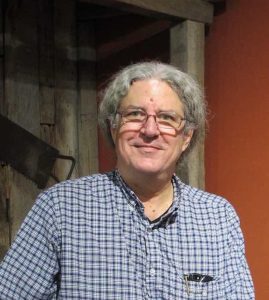 Gregory McNamee is a prolific writer, editor, photographer, and publisher. He is the author of forty-five books and numerous articles and other publications. McNamee is a contributing editor to the Encyclopædia Britannica and a research fellow at the Southwest Center of the University of Arizona. For more information visit McNamee’s web page at www.gregorymcnamee.com.
Gregory McNamee is a prolific writer, editor, photographer, and publisher. He is the author of forty-five books and numerous articles and other publications. McNamee is a contributing editor to the Encyclopædia Britannica and a research fellow at the Southwest Center of the University of Arizona. For more information visit McNamee’s web page at www.gregorymcnamee.com.
Contact Info: gregorymcnamee@gmail.com
Seeing the Desert
Most Arizonans are not originally from Arizona, and most come from places that are far greener and milder of climate than our desert. For many of us, it takes a shift of eye and of attitude to appreciate this hot, dry place—but once it gets into one’s soul, there’s nowhere like it. This talk explains that transformation, drawing on the work of poets such as Joy Harjo, Richard Shelton, and Ofelia Zepeda; novelists such as Barbara Kingsolver and Edward Abbey, nonfiction writers such as Joseph Wood Krutch and Mary Austin, and much more, from Native American folktales to modern scientific insights, all accompanied by a rich slide show full of art and photography. With insights from literature, philosophy, art, neurology, and other fields, Gregory McNamee will discuss how we can learn to see the desert as a place of abundant life, abundant beauty, and abundant possibilities for happiness.
- Presentation Category – Environmental Humanities | Literature
Cochise, Geronimo, and the Apache Wars
Their names resound in Arizona history and pepper the of the state map, but few people know well the tangled history that surrounds the so-called “Apache Wars”, when fully half of the active U.S. Army descended on the territory to combat a relative handful of Indigenous warriors. Ironically, the Apache peoples of the Southwest had once welcomed the arrival of the Americans as a buffer against Mexico, which regularly attached Apache settlements—but then American miners and loggers began to encroach, and a defensive war turned into a terrible guerrilla campaign that lasted a quarter-century. In this talk, Gregory McNamee, who has written about the Apache Wars for Encyclopaedia Britannica and other publications, unravels the complex story of the conflict and the decades of uneasy peace that followed.
- Presentation Category – Arizona/Southwest History
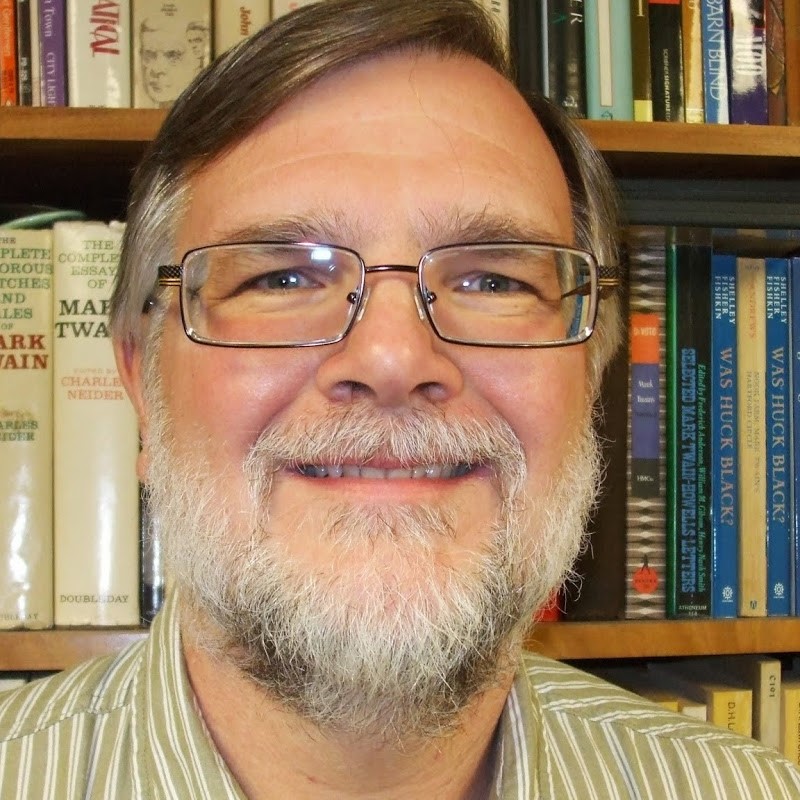 Following a career as an English professor, Jim McWilliams retired in May 2018 and moved to Tucson. His teaching and research focused on modern British and American literature. Since his retirement, Dr. McWilliams has spent his time taking courses, primarily in anthropology and archeology, and volunteering.
Following a career as an English professor, Jim McWilliams retired in May 2018 and moved to Tucson. His teaching and research focused on modern British and American literature. Since his retirement, Dr. McWilliams has spent his time taking courses, primarily in anthropology and archeology, and volunteering.
Contact Info: jlm58601@yahoo.com
The Middle Passage in Literature and Film: Africans, Slavery, and the New World
The Middle Passage, the transportation of Africans into slavery in the New World, is one of the most significant episodes in American history. To understand that significance, we’ll begin with historical background and then focus on Robert Hayden’s poem “Middle Passage” (1962) and Charles Johnson’s novel Middle Passage (1991), as well look at a few representations in film such as Roots (1977, 2016). Until we understand our past, we can’t understand our present, which means examining the painful questions about the origins of slavery in the lands that would become the United States.
- Presentation Category – Literature | U.S. & World History
Learning to Live Together: Martin Luther King Jr. and His Philosophy of the Beloved Community
One of the most important concepts in Martin Luther King Jr.’s teachings is the idea of “the beloved community,” the possibility of a society in which people from diverse backgrounds and economic circumstances learn to live together. Conflict in any society, he taught, is inevitable, but it can be resolved through non-violence and a commitment toward equal justice. This presentation will explore MLK’s ideas through the works of Charles Johnson, the National Book Award-winning novelist, who has written extensively about MLK and his philosophy. Together we will consider Johnson’s novel Dreamer (1998), which presents a fictionalized account of King’s summer in Chicago in 1966, and his short story “Dr. King’s Refrigerator” (2005), which imagines a midnight snack in 1954 for the man who was about to lead a Civil Rights revolution.
- Presentation Category – Literature
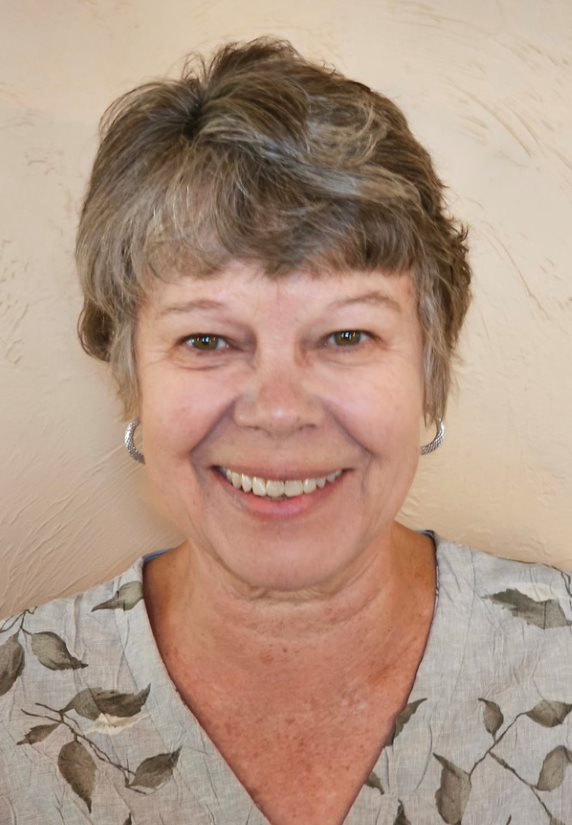 Dr. Mary Melcher, public historian, completed her Ph.D. in American history at Arizona State University in 1994, with fields in the twentieth century, women’s history, and the West. Dr. Melcher has worked as a curator in various museums and as a public history consultant. She was the lead historian for the Arizona Women’s Heritage Trail, a public history project combining women’s history with interpretation of historic sites. Dr. Melcher has conducted over 150 oral histories and published numerous articles in historical journals. She has a strong interest in women’s history in relation to reproduction. In 2012, she published Pregnancy, Motherhood and Choice in Twentieth Century Arizona with the University of Arizona Press.
Dr. Mary Melcher, public historian, completed her Ph.D. in American history at Arizona State University in 1994, with fields in the twentieth century, women’s history, and the West. Dr. Melcher has worked as a curator in various museums and as a public history consultant. She was the lead historian for the Arizona Women’s Heritage Trail, a public history project combining women’s history with interpretation of historic sites. Dr. Melcher has conducted over 150 oral histories and published numerous articles in historical journals. She has a strong interest in women’s history in relation to reproduction. In 2012, she published Pregnancy, Motherhood and Choice in Twentieth Century Arizona with the University of Arizona Press.
Contact Info: marymelcher3@gmail.com
Dr. Pearl Tang: Path Breaker in Public Health
In 1960, Dr. Pearl Mao Tang became chief of the Maricopa County Bureau of Maternal and Child Health. A Chinese American, who had fought to obtain a medical license in Arizona, Tang was instrumental in lowering the infant mortality rate in the state’s most populous county. Working in the Phoenix metropolitan area and rural Maricopa Country, Dr. Tang dedicated her career to improving the health of mothers and children. Her work, and that of public health nurses, aided families in migrant farm camps and impoverished urban areas. Dr. Tang became a very effective leader in public health, and her work impacted thousands of Arizonans. This presentation explores Tang’s career, as well as historical conditions in Arizona which made her work so vital and needed.
- Presentation Category – Arizona/Southwest History | Culture, Gender, & Identity Studies – Asian American Studies
Arizona’s Birth Control Movement: Providing Contraceptives to Rural and Urban Women
Today, women’s ability to control their reproduction through use of contraception is taken for granted. But this is a fairly recent phenomenon. Birth control was illegal in the U.S. until 1936. Before birth control was legalized, a lively birth control movement developed in Arizona,initiated by Margaret Sanger and volunteers in Tucson and Phoenix. Working with upper middle- class women, including Maie Heard, founder of Heard Museum, and Peggy Goldwater, wife of Barry Goldwater, Sanger publicized family planning and opened clinics. Others also provided contraceptives, including Farm Security Administration nurses who distributed birth control to the racially and ethnically diverse women working in Arizona migrant camps. In addition, a Catholic priest, Father Emmett McLoughlin, provided contraceptives in south Phoenix through St. Monica’s Clinic. The work of these varied individuals gave women greater control over their reproductive lives. This talk provides historical context related to birth control, while also exploring racial and class issues related to the topic.
- Presentation Category –Arizona/Southwest History | Culture, Gender, & Identity Studies – Women’s Studies | Medical Humanities
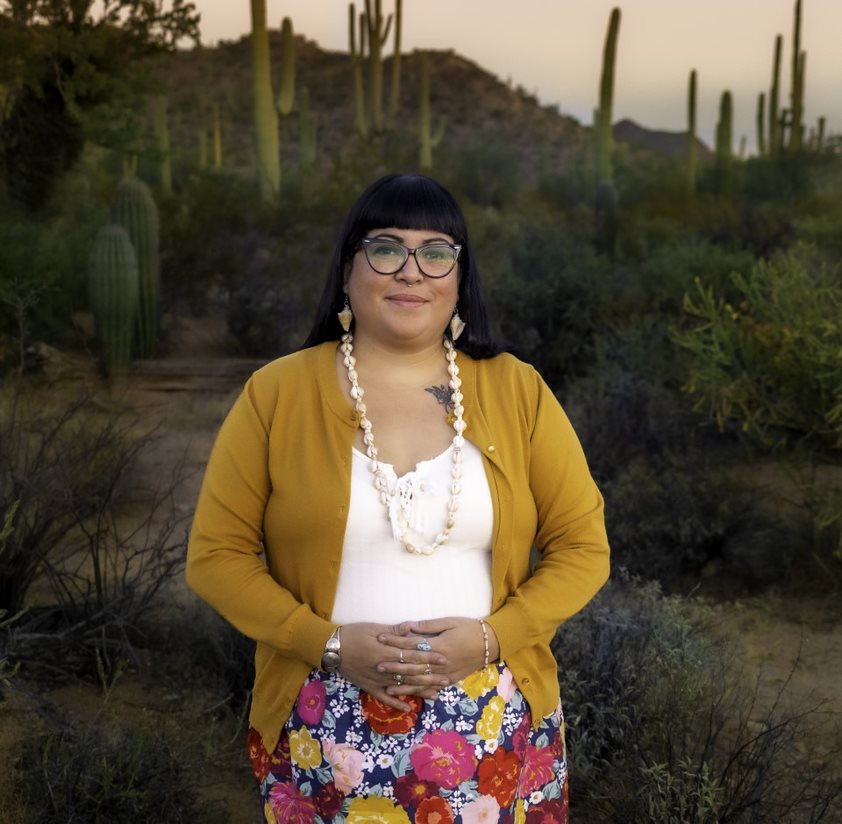
Dr. Jacelle Ramon-Sauberan is Tohono O’odham and from the San Xavier District. She serves as faculty in the Tohono O’odham Studies Program at Tohono O’odham Community College. Dr. Ramon-Sauberan also serves as the Tohono O’odham Nation Education Development Liaison for Kitt Peak National Observatory. She earned her PhD in American Indian Studies with a minor in Journalism at the University of Arizona in May 2023. Her research focused on the history of land and water in the San Xavier District and she has written for news publications across the US including Indian Country Today.
Contact Info: jaceller@arizona.edu
Growing in the Desert: The History & Culture of the Tohono O’odham
Many Arizonans call the Sonoran Desert and its striking landscapes home. Long before our urban centers and city lights lit up the dark desert skies, the Tohono O’odham were cultivating and shaping the land with abundant agriculture—from squash and beans to corn and cotton. For generations they passed down their rich knowledge and culture grown from their connection to the desert. Join us for a program with Jacelle Ramon-Sauberan as she shares her knowledge about the history and culture of her people, the Tohono O’odham.
- Presentation Category – Arizona/Southwest History | Culture, Gender, and Identity Studies – Native American Studies | Environmental Humanities
Tohono O’odham Food Systems
Traditional foodways of the Tohono O’odham are inextricably linked to their ancestral lands in the Sonoran Desert. O’odham knowledge of hunting, farming, and harvesting wild foods has evolved over generations and continues to adapt to the land. How are communities sharing contemporary cultivation methods? How is climate change affecting traditional foodways? What can we learn from O’odham practices for sustainability? Join us for a conversation with Dr. Jacelle Ramon-Sauberan about the cultural food systems of the Tohono O’odham and their connection to the land, plants, and animals.
- Presentation Category – Arizona/Southwest History | Culture, Gender, and Identity Studies – Native American Studies | Environmental Humanities
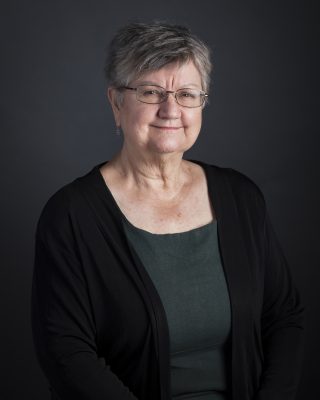 Christine Reid’s interest in Arizona’s diverse and rich western heritage developed and grew as a writer and researcher with the Pinal County Historical Museum and later as Community Scholar for the Anthem at
Christine Reid’s interest in Arizona’s diverse and rich western heritage developed and grew as a writer and researcher with the Pinal County Historical Museum and later as Community Scholar for the Anthem at
Merrill Ranch continuing education program. Reid is committed to sharing the sometimes hidden or forgotten aspects of Arizona’s characters and history. Reid shares Arizona’s history in a relatable and engaging manner.
Contact Info: 2010dogwood@gmail.com
The History and Mystery of the Gila River
Many people know about Arizona’s most famous river, the Colorado, but the often-forgotten Gila River has a rich and interesting history too. Reid will take the audience on a journey which begins in central New Mexico and joins the Gila River as it makes an historical journey through eastern and most of southern Arizona before joining the Colorado River. This program explores the geology that formed the Gila and the dinosaurs that splashed in it. You’ll learn about the history of prehistoric people who mastered and relied on the river. The human side of the Gila is brought to life through personal memoirs, field journals and anecdotes of the missionaries, explorers, and adventurers who followed it, to the pioneers who settled alongside it. The Gila River provided life giving water for agriculture, transportation, recreation, and inspiration for generations of people.
- Presentation Category – Arizona/Southwest History | Environmental Humanities
Arizona Snake Oil Salesmen, Scams, and Hoaxes
Entrepreneurs offering assorted “get rich quick” schemes and “cure-alls” have visited Arizona since the early days. Benefitting from tales of abundant resources in the territory, limited law enforcement and communication, a scoundrel could create enticing promises of wealth and health without much external oversight. Newspapers often fanned the hysteria only to later denounce and expose the same schemes. People from across America came west to seek a better life. When that better life proved too slow in materializing, they often fell prey to quick and easy alternatives being offered by schemers. Sometimes even the well-educated and worldly could not resist the lure, despite later admitting they should have known better. This program illustrates through newspaper articles, quotes, photographs and ephemera, some of the most famous, and some of the lesser-known, embarrassing scams and hoaxes that have found gullible Arizonans.
- Presentation Category – Arizona/Southwest History
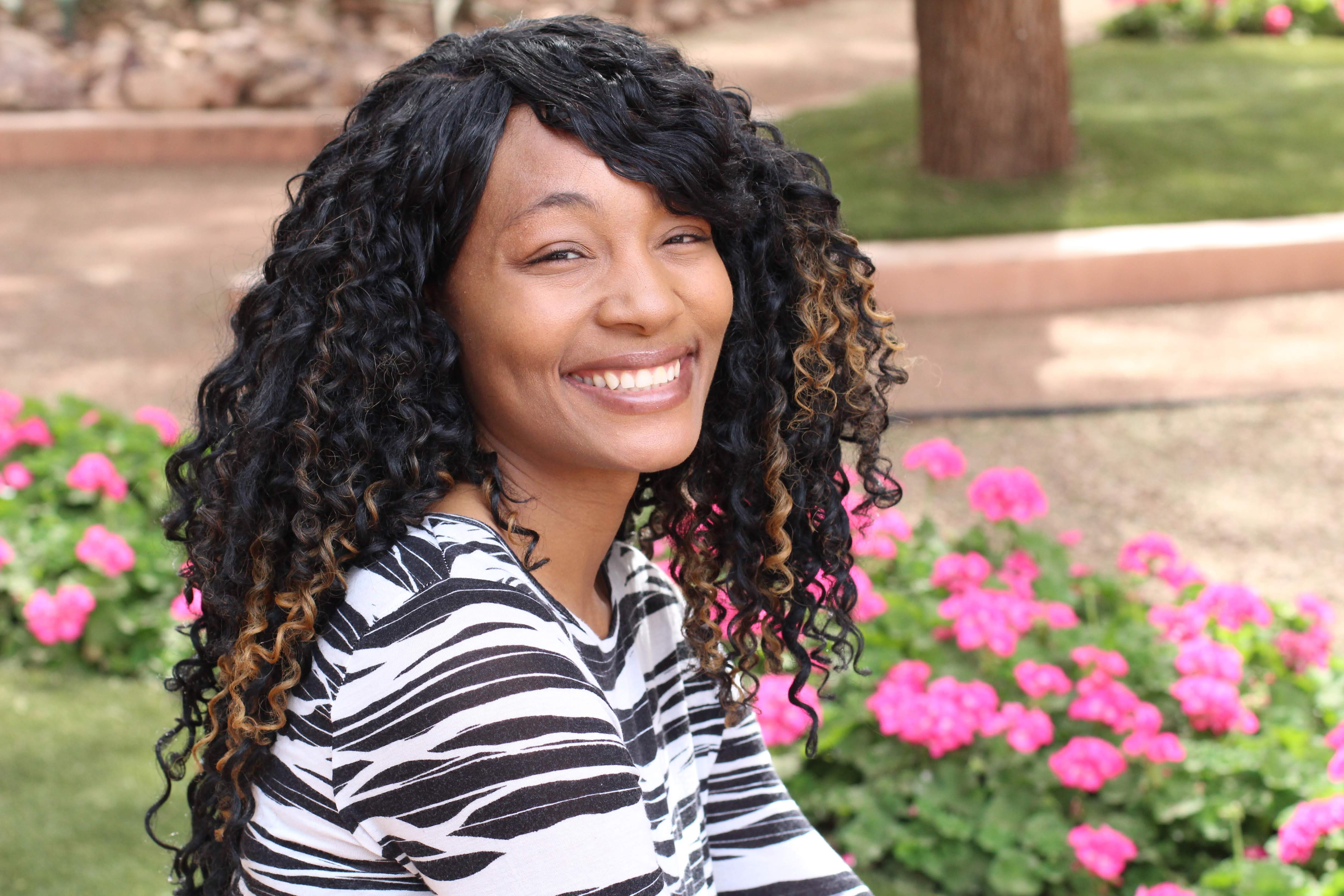 Tamika Sanders started her company Savvy Pen to provide interactive programs that incorporate arts learning and multicultural training to bridge cultural and socioeconomic divides between educators and students. Her work brings diverse real-world perspectives to programming initiatives and creates strategic community partnerships that can generate revenue and provide access to resources and opportunities for marginalized groups. In 2009, Dr. Sanders collaborated with the Bi-National Arts Residency (BNAR), which connects cultural communities in the Sonoran Desert on issues of social justice and identity through art. Dr. Sanders hopes to continue using the arts to break barriers, unite people, and create social change.
Tamika Sanders started her company Savvy Pen to provide interactive programs that incorporate arts learning and multicultural training to bridge cultural and socioeconomic divides between educators and students. Her work brings diverse real-world perspectives to programming initiatives and creates strategic community partnerships that can generate revenue and provide access to resources and opportunities for marginalized groups. In 2009, Dr. Sanders collaborated with the Bi-National Arts Residency (BNAR), which connects cultural communities in the Sonoran Desert on issues of social justice and identity through art. Dr. Sanders hopes to continue using the arts to break barriers, unite people, and create social change.
Contact Info: info@savvypen.com
Coded Messages and Songs of the Underground Railroad
Communication and secrecy were key to the successful operation of the Underground Railroad. Safety was more important than quickness. Both fugitive slaves and members of the Underground Railroad learned to code and decode hidden messages, and to disguise signs to avoid capture. There were code names for towns on the routes and code numbers for towns. There were signs and songs. A quilt hanging on a clothesline with a house and a smoking chimney among its designs indicated a safe house. The song, “Follow the Drinking Gourd” served as directions to Canada. Using storytelling, activities and songs, Dr. Sanders depicts the ingenuity and resiliency of those who used the Underground Railroad to help over 100,000 slaves escape to freedom between 1810 and 1850.
- Presentation Category – Culture, Gender, and Identity Studies – African American Studies | U.S. History | Music
Black Wall Street: Then and Now
Tulsa, Oklahoma’s Greenwood district was coined “Black Wall Street” because it was a thriving African American community that boosted hospitals, churches, shopping centers, schools, and banks. But all that changed, on May 31, 1921, when an angry mob stormed the town and burned everything to the ground. This presentation will explore what made Black Wall Street so important, the actions that brought the city to its demise, and the complicated truth about what actually happened on that brutal day, that make it worth reinvestigating!
- Presentation Category – Culture, Gender, and Identity Studies – African American Studies | U.S. History
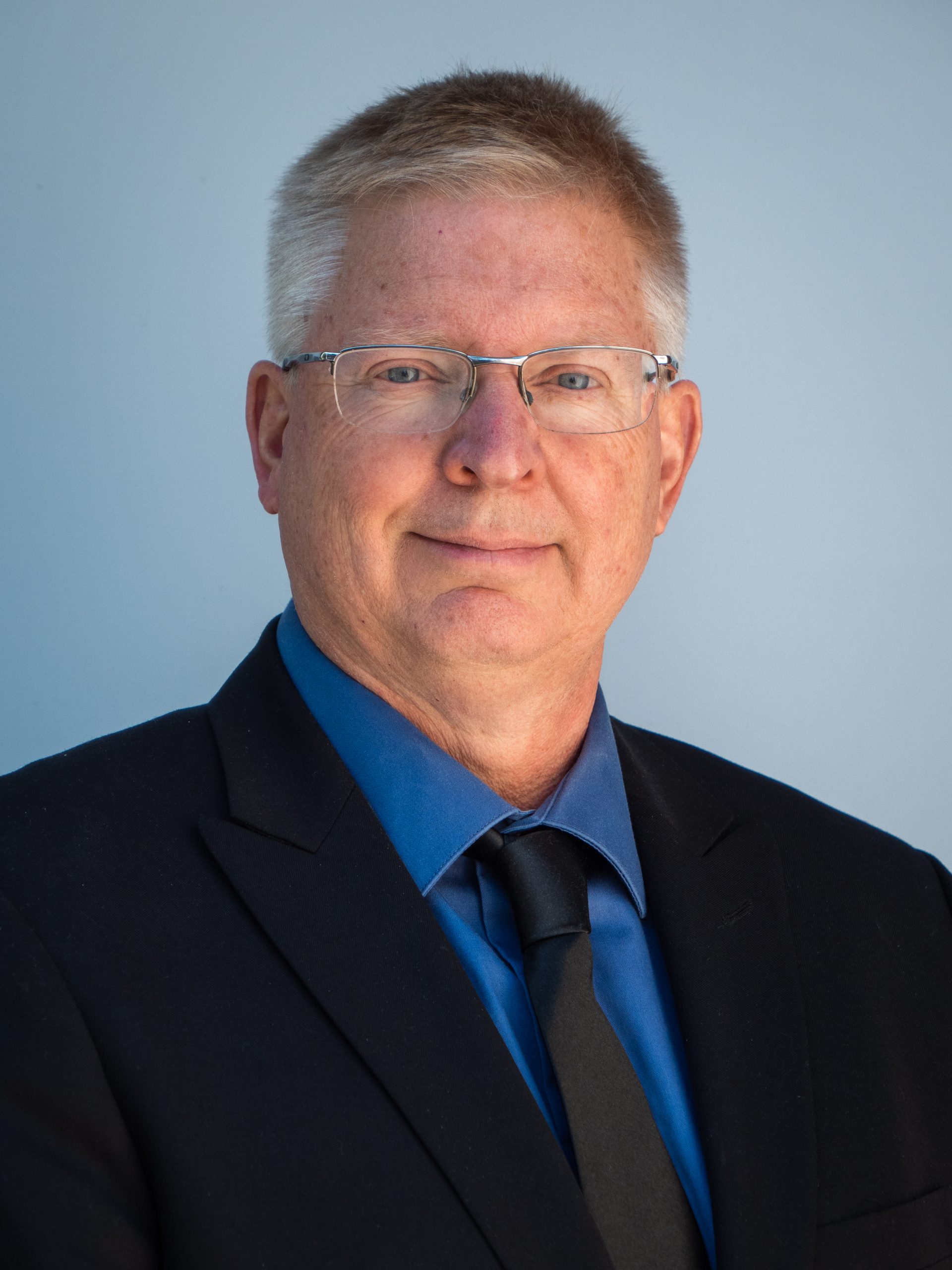 Kevin Schindler is the historian at Lowell Observatory, where he has worked for 28 years as an active member of the Flagstaff history and science communities. Schindler has given more than 1,000 presentations and written more than 600 magazine and newspaper articles on subjects ranging from local history and astronomy to baseball and the Lincoln Memorial, and contributes a bi-weekly astronomy column, “View from Mars Hill”, for the Arizona Daily Sun newspaper. Schindler has written nine books, including Historic Tales of Flagstaff (written with Mike Kitt). Fun fact: Kevin has both a fossil crab and asteroid named after him.
Kevin Schindler is the historian at Lowell Observatory, where he has worked for 28 years as an active member of the Flagstaff history and science communities. Schindler has given more than 1,000 presentations and written more than 600 magazine and newspaper articles on subjects ranging from local history and astronomy to baseball and the Lincoln Memorial, and contributes a bi-weekly astronomy column, “View from Mars Hill”, for the Arizona Daily Sun newspaper. Schindler has written nine books, including Historic Tales of Flagstaff (written with Mike Kitt). Fun fact: Kevin has both a fossil crab and asteroid named after him.
Contact Info: kevinsschindler@gmail.com
Brighty of the Grand Canyon: Wild Donkeys of the West
Millions of people visit the Grand Canyon every year. Some people may be familiar with the burros that inhabit the land. But have you heard of the burro, Brighty? Marguerite Henry’s 1953 book, Brighty of the Grand Canyon, as well as the 1966 movie that it inspired, are fictionalized accounts of a real-life, free-spirited burro that roamed Grand Canyon from the 1890s – 1920s. This program will look at the story of Brighty, connecting real vs fictional Arizona heritage, and how his story helped lead to a change in the National Park Service’s policy of removing feral burros from Grand Canyon National Park.
- Presentation Category – Arizona/Southwest History | Film & Media | Storytelling & Folklore
Dark Skies over Arizona
There’s nothing like standing under a dark, star-spangled night sky to quiet the mind and reduce stress, share an experience of awe with family and friends, and to inspire creative thoughts. Yet such dark skies are a disappearing resource, with only 20% of the world living in a place where the center of our Milky Way Galaxy is visible. Arizona knows a thing or two about this problem and has played a leading role in reducing artificial light pollution. This program will look at the benefits of dark skies, how Arizona has helped lead the charge to protect them, and how we all can do our part in reducing artificial light pollution.
- Presentation Category – Environmental Humanities
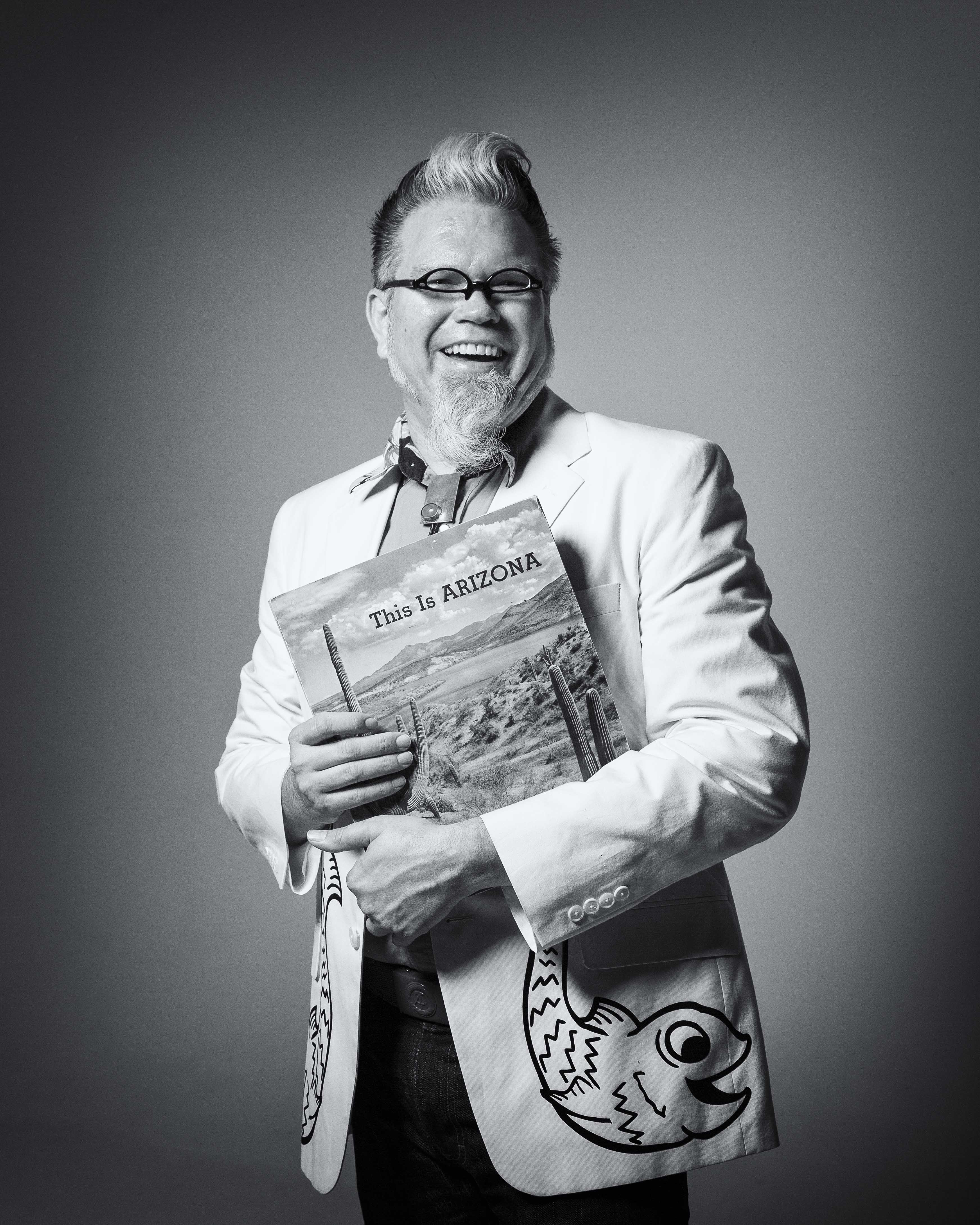 An Emmy nomination for sharing Arizona history is just the latest recognition for Marshall Shore, Arizona’s Hip Historian. His passion is uncovering the weird, the wonderful, and the obscure treasures from our past: the semi-forgotten people, places, and events that have made us who we are today. Shore uses storytelling magic, found film footage, old photographs, ephemera, and artifacts to bring our state’s heritage to life in entertaining and educational presentations. He has developed an almost cult-like following for sharing history through in- person and virtual events.
An Emmy nomination for sharing Arizona history is just the latest recognition for Marshall Shore, Arizona’s Hip Historian. His passion is uncovering the weird, the wonderful, and the obscure treasures from our past: the semi-forgotten people, places, and events that have made us who we are today. Shore uses storytelling magic, found film footage, old photographs, ephemera, and artifacts to bring our state’s heritage to life in entertaining and educational presentations. He has developed an almost cult-like following for sharing history through in- person and virtual events.
Contact Info: marshall.shore@gmail.com
Arizona’s Cosmic Connections
This program celebrates Arizona’s multifaceted relationship with the universe, highlighting its significant contributions to space exploration, sustainability, research, and the enduring celestial stories of its Indigenous peoples. Join us as we journey through the Grand Canyon State’s rich heritage and innovative strides, showcasing how Arizona continues to illuminate our understanding of the stars and beyond.
- Presentation Category – Arizona/Southwest History
LGBT+: A History in Arizona
Arizona’s history of the LGBT+ community begins long before Arizona was a state with the Native American belief of two-spirits and continues through to the seismic shift of Civil Union/ Marriage Equality. There are some surprises along the way such as artists and Arizona connections to Warhol, Keith Haring, and those muscle magazines by George Quaintance. Where was the Trans Flag created and where is it now? There is also the little-known story of a 1906 Russian gender pioneer named Nicolai De Raylan.
- Presentation Category – Arizona/Southwest History | Culture, Gender & Identity Studies – LGBTQ+
 Rodo Sofranac spent his first few years in a tiny village called Rijeka Crnojevića, Montenegro—former Yugoslavia. His family fled to Austria and later immigrated to the United States. He speaks, reads, and writes Serbo-Croatian and German. Interestingly, the Montenegrin connection brought Sofranac to Arizona in 1974. This diversity of cultures and languages has inspired Sofranac to read, write, and enjoy sharing stories. As a teacher, translator, mentor, and community organizer, he has worked with people of all ages— from birth to over 100—and in numerous settings, including over 30 years at the university level. Sofranac‘s award-wining work embraces varied storytelling, the latest being nine fun children’s books.
Rodo Sofranac spent his first few years in a tiny village called Rijeka Crnojevića, Montenegro—former Yugoslavia. His family fled to Austria and later immigrated to the United States. He speaks, reads, and writes Serbo-Croatian and German. Interestingly, the Montenegrin connection brought Sofranac to Arizona in 1974. This diversity of cultures and languages has inspired Sofranac to read, write, and enjoy sharing stories. As a teacher, translator, mentor, and community organizer, he has worked with people of all ages— from birth to over 100—and in numerous settings, including over 30 years at the university level. Sofranac‘s award-wining work embraces varied storytelling, the latest being nine fun children’s books.
Contact Info: rodowrites@cox.net
Take A Hike! Explore, Enhance, and Experience Your Understanding of Arizona
There are only eleven designated national scenic trails in the United States. Our Grand Canyon State has one of them—the Arizona National Scenic Trail! In this discussion, participants will have opportunities to: explore the history of the creation of Arizona’s greatest volunteer project; enhance their knowledge of Arizona’s diverse geography, animals, plants, and especially people—from the first, to the newest Americans, to the global travelers and, as we were reminded of the physical environment’s value to human existence, experience and sustain all or part of one of Arizona’s greatest resources, the Arizona Trail.
- Presentation Category – Environmental Humanities
 Yolanda Hart Stevens is an enrolled member of the Gila
Yolanda Hart Stevens is an enrolled member of the Gila
River Indian Community, Pee-Posh/Quechan, and currently resides in the village of Komatke, AZ. Hart Stevens is a successful artist and community activist, performing at notable events such as Super Bowl XLII, The National Congress of the American Indian, and serving in highly-regarded positions such as the Smithsonian Institution American Community Scholar and a member of the Kennedy Center for Arts and Education. As an artist in residence at the Heard Museum in Phoenix, and as a teacher of beadwork, she has developed programs to promote a clearer understanding of the people of the Southwest through their history, clothing, and decoration. She teaches a variety of beading techniques, including lazy stitch, edging and peyote stitch at various locals throughout the valley. Hart Stevens is passionate about maintaining a dialogue with her elders, contributing her skill of beadwork, and sharing the given knowledge with her family and young people. She is actively participating in training from Yuman tribal elders.
Contact Info: ndncouture@gmail.com
Connections to Holistic Material: Native Culture Today and Tomorrow
From birth to death, the mesquite tree is an integral part of life for many who call the desert home. The mesquite tree is just one of many holistic materials, elements of our natural environment, that are vital to sustaining Native culture and practices. But climate change and environmental degradation are changing the landscapes of Arizona. From the lack of water resources to the loss of mesquite trees, the future is uncertain. Join us for a program about water, land, and the environmental challenges impacting Native communities.
- Presentation Category – Art/Art History | Culture, Gender, & Identity Studies – Native American Studies | Environmental Humanities
Indigenous Signs and Symbols: Pee-Posh/Kwatsan
Native Americans in the U.S. are diverse, and their contributions have enriched our lives in countless ways. People do not always realize the origins of Native contributions to the language, culture, and traditions of the U.S. What are Native signs and symbols? What do they mean? Where do they appear? They can represent animals and appear in petroglyphs, attire and much, much more. Explore the traditions and history of the Pee-Posh/Kwatsan. Learn about the signs and symbols which have been passed down for generations, and the meaning of tattoos and markings for this tribe.
- Presentation Category – Art/Art History | Culture, Gender, & Identity Studies – Native American Studies
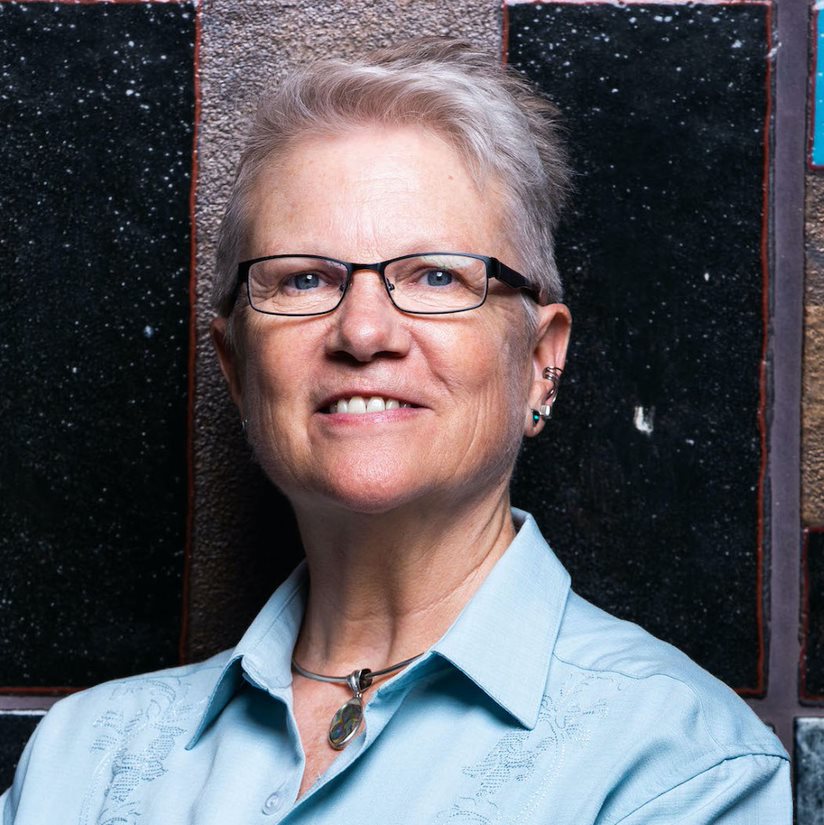 Dr. Pamela Stewart—historian, educator, and consultant with learning design expertise—has over 20 years of experience teaching wide-ranging history courses to non-majors at ASU and in public-facing contexts, including 55+ audiences and public art tours and educational presentations at Phoenix Art Museum. Retiring from ASU in 2022, her non-traditional academic career path has played a significant role in advocating the “doing” of history in ways that show the relevance and inclusive nature of thinking historically to address current challenges. She seeks to expand awareness of the fact that if we don’t know the history, we can’t solve the problem.
Dr. Pamela Stewart—historian, educator, and consultant with learning design expertise—has over 20 years of experience teaching wide-ranging history courses to non-majors at ASU and in public-facing contexts, including 55+ audiences and public art tours and educational presentations at Phoenix Art Museum. Retiring from ASU in 2022, her non-traditional academic career path has played a significant role in advocating the “doing” of history in ways that show the relevance and inclusive nature of thinking historically to address current challenges. She seeks to expand awareness of the fact that if we don’t know the history, we can’t solve the problem.
Contact Info: dr.stewart@activhistorian.com
Access to Athletics for Girls and Women: The Life Work of Ina E. Gittings (1885-1966)
Long before Title IX (a law which prohibits sex-based discrimination in schools that receive federal funding), Ina E. Gittings became the first university Director of Women’s Physical Education and Athletics in Arizona in 1920, where she would spend the rest of her life. Before arriving at University of Arizona and traveling the state to help develop women’s and girls’ athletic opportunities, the Nebraska Phi Beta Kappa, pole-vaulting, homesteading educator served in the US Army Medical Corps during World War I as a Reconstruction Aide—the world’s first generation of physical therapists. She followed this with a stint in humanitarian service aiding Armenian refugees in Turkey. Through this interactive presentation exploring the past and current landscape for women athletes, discover the significance of this fascinating individual whose very name marks Arizona’s map.
- Presentation Category – Arizona/Southwest History | Culture, Gender, & Identity Studies – Women’s Studies | Humanities in Contemporary Issues
The History Matters: Yours Too!
Reasons exist for why people do not look to history to address today’s challenges. Yet actively engaging in historical thinking can reveal tools for solving problems faster and with greater success. Even as personal history can matter and the presentation is useful for those interests, this is not an introduction to genealogy class. The interactive, question-based presentation encourages attendees to share experiences that allow for new starting points for learning and reflection—and creating change. The class introduces how harnessing history to solve today’s problems works. It also shows how “doing” a bit of history can help us understand our own value in creating change, open up possibilities for creatively moving forward, and lead towards resolving problems, whether on a small or much larger scale.
- Presentation Category – Humanities in Contemporary Issues
 Laura Tohe is Diné. She is Sleepy Rock people clan born for the Bitter Water people clan and is the daughter of a Navajo Code Talker. A librettist and an award-winning poet, she has written three books of poetry, edited two books, and written an oral history book on the Navajo Code Talkers. Her commissioned libretto, Enemy Slayer, A Navajo Oratorio, world premiered for the Phoenix Symphony and her latest libretto, Nahasdzaan in the Glittering World was performed in France in 2019 and 2021. Among her awards are the 2020 Academy of American Poetry Fellowship; 2019 American Indian Festival of Writers Award; and the Arizona Book Association’s Glyph Award for Best Poetry. Tohe is Professor Emerita with Distinction from Arizona State University and is the current Navajo Nation Poet Laureate.
Laura Tohe is Diné. She is Sleepy Rock people clan born for the Bitter Water people clan and is the daughter of a Navajo Code Talker. A librettist and an award-winning poet, she has written three books of poetry, edited two books, and written an oral history book on the Navajo Code Talkers. Her commissioned libretto, Enemy Slayer, A Navajo Oratorio, world premiered for the Phoenix Symphony and her latest libretto, Nahasdzaan in the Glittering World was performed in France in 2019 and 2021. Among her awards are the 2020 Academy of American Poetry Fellowship; 2019 American Indian Festival of Writers Award; and the Arizona Book Association’s Glyph Award for Best Poetry. Tohe is Professor Emerita with Distinction from Arizona State University and is the current Navajo Nation Poet Laureate.
Contact Info: l.tohe@asu.edu
Talking Code with a Secret Weapon: Navajo Code Talkers Speak
During WWII a group of young Navajo men enlisted in the Marines unaware that they would develop a secret code against the Japanese military. This select group of Code Talkers devised a Navajo language code that was accurate, quick, never broken, and saved many American lives. Excerpts from live interviews with the Code Talkers tell their stories before, during, and after the war that reflect their resiliency and their service to the U.S., a country that once tried to erase Navajo identity and language in the schools. Without fanfare the Code Talkers returned home to continued poverty and lack of opportunity and yet persevered. They overcame obstacles that helped change the Navajo Nation and their communities. Over twenty years passed after their discharge before Code Talkers were honored for their service by U.S. Presidents and the Navajo Nation.
- Arizona/Southwest History | Culture, Gender, & Identity Studies – Native American Studies
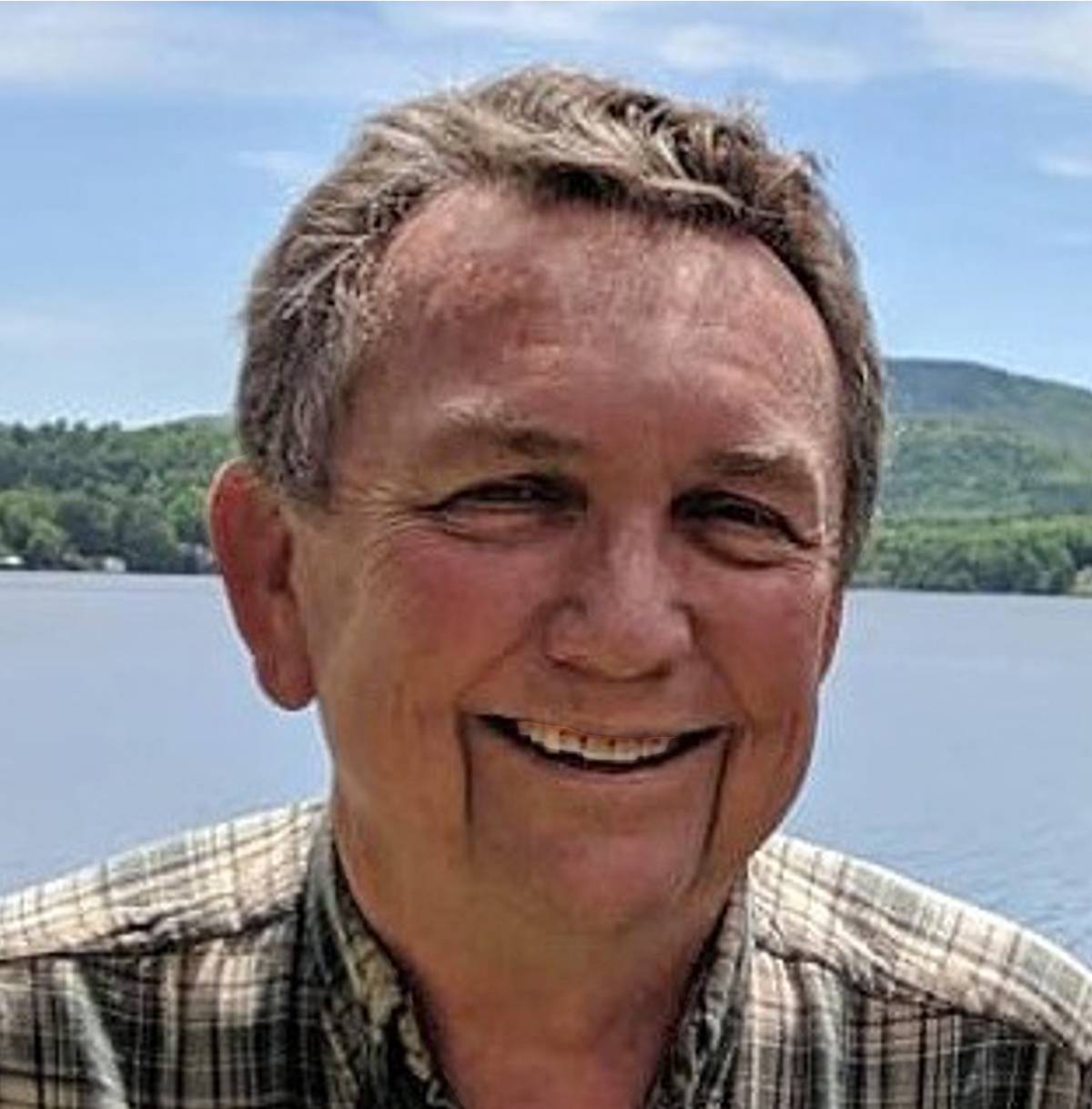 Arizona Historical Society’s beloved historian, Jim Turner, has worked with more than seventy local history museums. He co-authored the 4th-grade textbook The Arizona Story, and his pictorial history, Arizona: Celebration of the Grand Canyon State, was a 2012 Southwest Books of the Year selection. Turner moved to Tucson in 1951, earned an MA in U.S. history in 1999, and has been teaching Arizona history for 47 years. His numerous books include: The Mighty Colorado from the Glaciers to the Gulf (2016), Four Corners USA: Wonders of the American Southwest (2018), and Arizona: A History of the Grand Canyon State (2021). jimturnerhistorian.org
Arizona Historical Society’s beloved historian, Jim Turner, has worked with more than seventy local history museums. He co-authored the 4th-grade textbook The Arizona Story, and his pictorial history, Arizona: Celebration of the Grand Canyon State, was a 2012 Southwest Books of the Year selection. Turner moved to Tucson in 1951, earned an MA in U.S. history in 1999, and has been teaching Arizona history for 47 years. His numerous books include: The Mighty Colorado from the Glaciers to the Gulf (2016), Four Corners USA: Wonders of the American Southwest (2018), and Arizona: A History of the Grand Canyon State (2021). jimturnerhistorian.org
Contact Info: jimturnerhistorian@gmail.com
Arizona Colonists, Pioneers, and Immigrants: A multicultural history
Arizona’s history is much more than Hollywood’s Wild West stereotypes of cowboys, lawmen, and outlaws. In addition to miners, merchants, and ranchers, the area attracted faith-based farmers, health seekers, and women entrepreneurs of many creeds and cultures, including a Greco-Syrian camel driver. This presentation describes Arizona history’s notables and notorious characters from common folk to public heroes.
- Presentation Category – Arizona/Southwest History
The Colorado River and its Wonders: A Study in Water Use and Conservation
The Colorado River is a critical source of the West’s water supply, supporting 40 million people, nearly 6 million acres of agriculture, and tribes across seven states and portions of Mexico. At 1,450 miles long the Colorado River is the sixth longest river in the United States. The river flows through seven states and covers 244,000 square miles, about 1/12th of the United States. Known for its dramatic canyons, whitewater rapids, and eleven U.S. National Parks, the Colorado River and its tributaries are a vital source of water. An extensive system of dams, reservoirs, and aqueducts divert almost its flow for agricultural irrigation and urban water supply. Its large flow and steep gradient (10,184 ft above sea level to 58 feet in the Mexicali Valley) are used to generate hydroelectric power to several western states and Nebraska. This presentation discusses the geology, geography, exploration, national parks, and the state of the river today with its natural beauty, current difficulties, and solutions.
- Presentation Category – Arizona/Southwest History | Environmental Humanities
 Scott Warren lives in Ajo, Arizona where he works as an academic geographer. His research, teaching, and experience is at the intersection of people and place in the broad Mexico-U.S. borderland. The landscapes of Arizona and the continental southwest inspire his work.
Scott Warren lives in Ajo, Arizona where he works as an academic geographer. His research, teaching, and experience is at the intersection of people and place in the broad Mexico-U.S. borderland. The landscapes of Arizona and the continental southwest inspire his work.
Contact Info: scottdw1@gmail.com
Thinking About the American Southwest
For many of us, the American Southwest is distinctive because of its landscape, culture, and history. We see, for instance, its mountains, deserts, and canyons. We are aware of its diverse cultures. And we have some understanding of the Indigenous, Mexican, and U.S. histories that have brought us to the present moment. But a careful examination of these taken-for-granted features reveals that there is more than meets the eye. Beneath this surface we find that the American Southwest is as much a product of the imagination as it is a geographical fact. In this presentation we take insights from the field of cultural geography to consider how the Southwest came to be a distinctive region both on the ground and in our minds, and we question whether these distinctive landscapes conceal as much as they reveal about our southwestern society.
- Presentation Category – Borderland & Immigration | Humanities in Contemporary Issues
Border Geography: Key Context from the Arizona-Mexico Boundary
The boundary that separates Arizona from Mexico extends 354 miles across land and 24 miles up the Colorado River. Arizona shares this boundary with two Mexican states and two Native
American Reservations. Eight ports-of-entry and six sets of border town pairs create important points of contact. Efforts to conserve land, manage urban growth, create resilient economies, and share water resources extend across the border and these multiple jurisdictions. These days our attention to the border is preoccupied with the issues of immigration and drugs, but there is much more to this important place that is worth knowing. In this presentation we apply a
geographical lens to the Arizona-Mexico boundary and focus in on issues of land use,
economics, security, and water. In doing so we create a basic framework that should be helpful to anyone who wants to explore the Arizona-Mexico borderland region for themselves.
- Presentation Category – Borderland & Immigration | Humanities in Contemporary Issues
 Dr. Li Yang has been an Arizona Humanities Road Scholar in the AZ Speaks Program since 2015. A recipient of the C.L. Sonnichson Award for best article in The Journal of Arizona History in 2011, her writings, concerning topics ranging from Chinese history to Chinese American history, have appeared in The Journal of Arizona History and some major magazines and newspapers in both Taiwan and mainland China. Additionally, Dr. Yang is also a prolific translator. She has translated three books from English to Chinese in the areas of modern Chinese history and Sino-American relations during the Cold War era. Yang received her Ph.D. in East Asian Studies from the University of Arizona in 2004 and taught variously at the University of Arizona, the Arizona State University and Pima Community College. She also held a full-time faculty position at the Embry- Riddle Aeronautical University from 2010-2013.
Dr. Li Yang has been an Arizona Humanities Road Scholar in the AZ Speaks Program since 2015. A recipient of the C.L. Sonnichson Award for best article in The Journal of Arizona History in 2011, her writings, concerning topics ranging from Chinese history to Chinese American history, have appeared in The Journal of Arizona History and some major magazines and newspapers in both Taiwan and mainland China. Additionally, Dr. Yang is also a prolific translator. She has translated three books from English to Chinese in the areas of modern Chinese history and Sino-American relations during the Cold War era. Yang received her Ph.D. in East Asian Studies from the University of Arizona in 2004 and taught variously at the University of Arizona, the Arizona State University and Pima Community College. She also held a full-time faculty position at the Embry- Riddle Aeronautical University from 2010-2013.
Contact Info: yangli200683@gmail.com
American-born: The Story of Scholar, Leader, and Advocate Rose Hum Lee
Rose Hum Lee (1904-1964) was a renowned twentieth-century sociologist known for her studies of the Chinese in the United States. As an American-born daughter of Chinese immigrant parents, she offered a unique insider’s view of social structure and family life in American Chinatowns. Lee earned her doctorate at the University of Chicago in 1947 when she was 43 and went on to forge an independent career at Roosevelt University, a predominantly black school where she became head of the Department of Sociology. She advocated for complete assimilation as a solution to the challenges faced by Chinese Americans and condemned traditional leaders for obstructing this progress. Lee’s work continues to influence sociological research on immigrant experiences and cultural assimilation. She passed away in Phoenix, Arizona, in 1964 at the age of 59, leaving behind a lasting legacy in her academic field of research.
- Presentation Category – Arizona/Southwest History | Culture, Gender, & Identity Studies – Asian American Studies
Alana Yazzie is the creator of The Fancy Navajo, a lifestyle and food blog created in 2014, that follows Alana’s life as a contemporary Diné/Navajo woman living in the city of Phoenix, Arizona. Originally from Northwest New Mexico, Alana inspires others to embrace their culture, wherever they live, by sharing a variety of lifestyle content such as recipes, fashion, and gardening infused with her Navajo heritage. Alana’s greatest passion is developing innovative and approachable recipes that use Indigenous and Southwestern ingredients. Through, The Fancy Navajo, she enjoys capturing her Navajo lifestyle in modern and bright settings to showcase the continued presence and thriving of Indigenous peoples. Yazzie’s first book, The Modern Navajo Kitchen, was published by Wellfleet Press in 2024. Alana can be found on Instagram @TheFancyNavajo, Facebook @TheFancyNavajoBlog, and TheFancyNavajo.com
Contact Info: TheFancyNavajo@gmail.com
Navajo Blue Corn Mush: A Cultural Tradition Evolving Through Time
Embark on a culinary journey through time as we explore the rich history and cultural significance of Navajo blue corn. Discover how blue corn, a staple crop for generations, has been an essential part of Navajo life. See how this ancient grain is transformed into a nourishing and flavorful meal, called blue corn mush. Uncover the secrets of juniper ash, a unique ingredient that adds depth and complexity to the dish. Explore how blue corn has evolved in modern Navajo recipes, incorporating new flavors and techniques while preserving its cultural heritage.
Note: This presentation includes the usage of food. Please check with your site to make sure food is allowed. If not, please contact the speaker and let them know. The presentation can be done without food as well.



